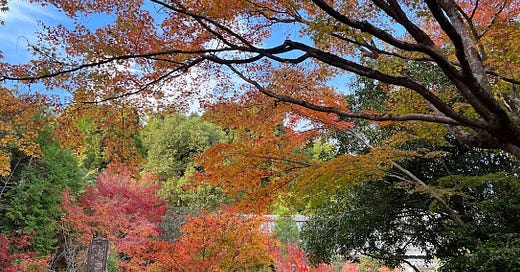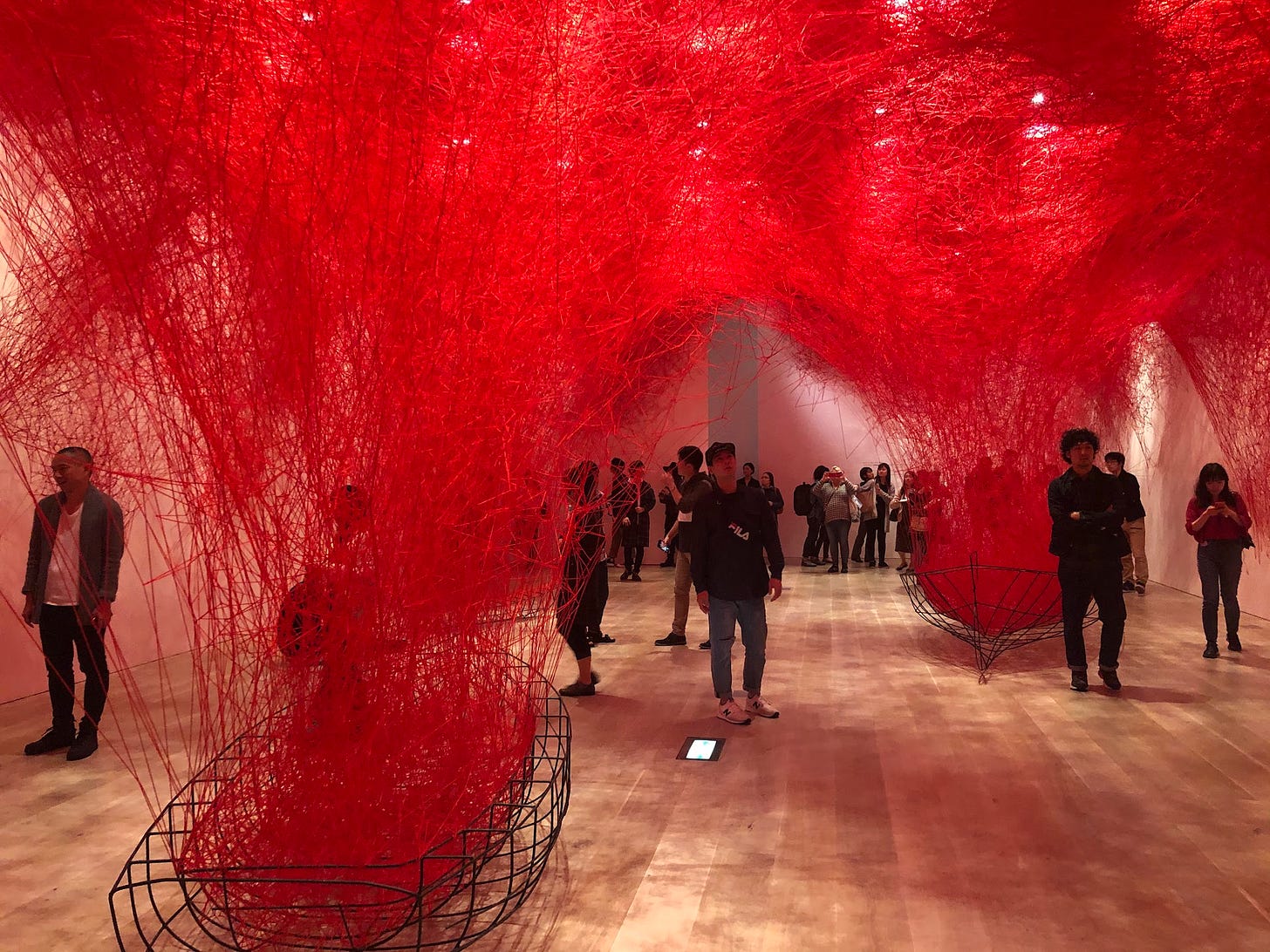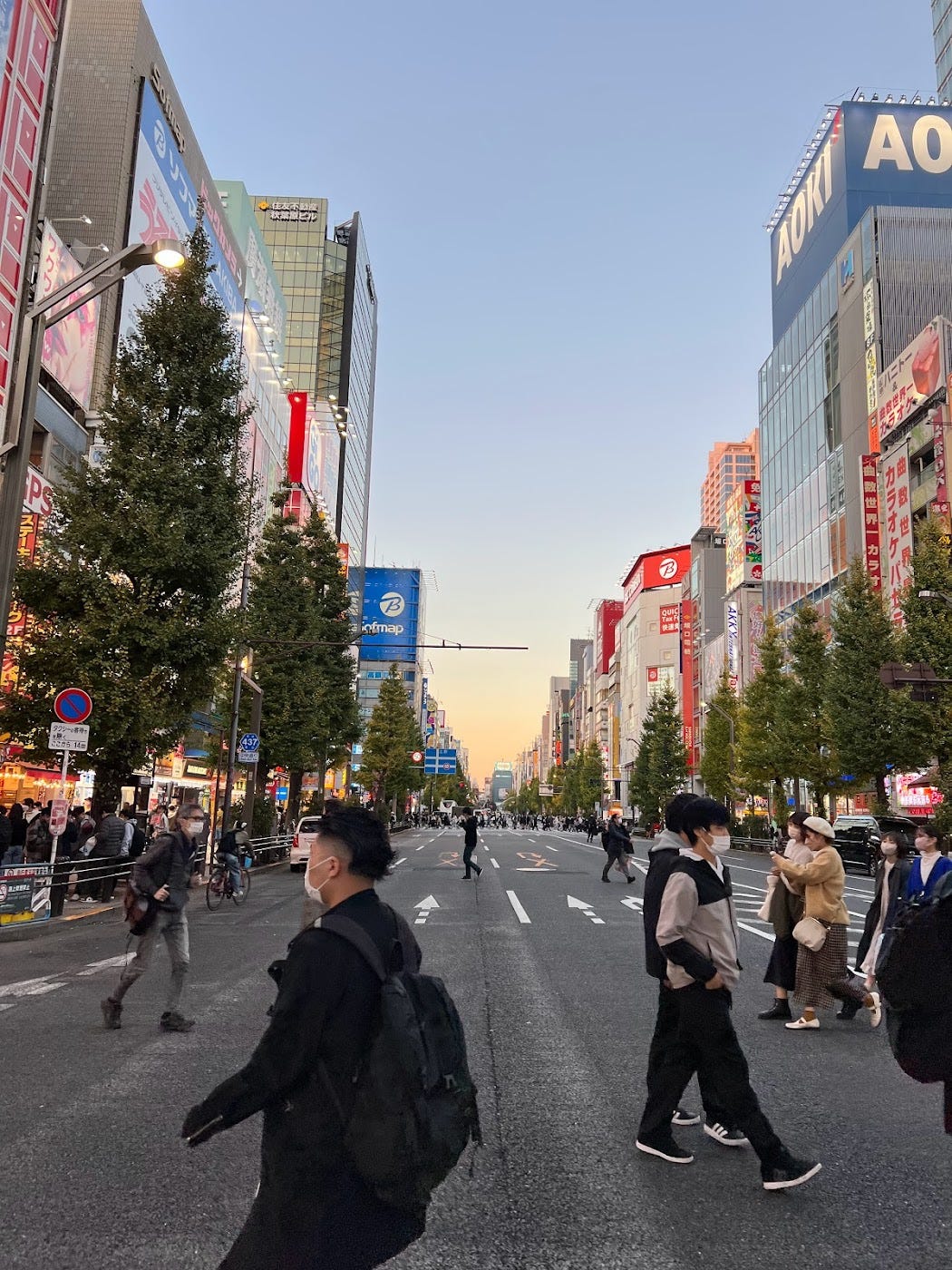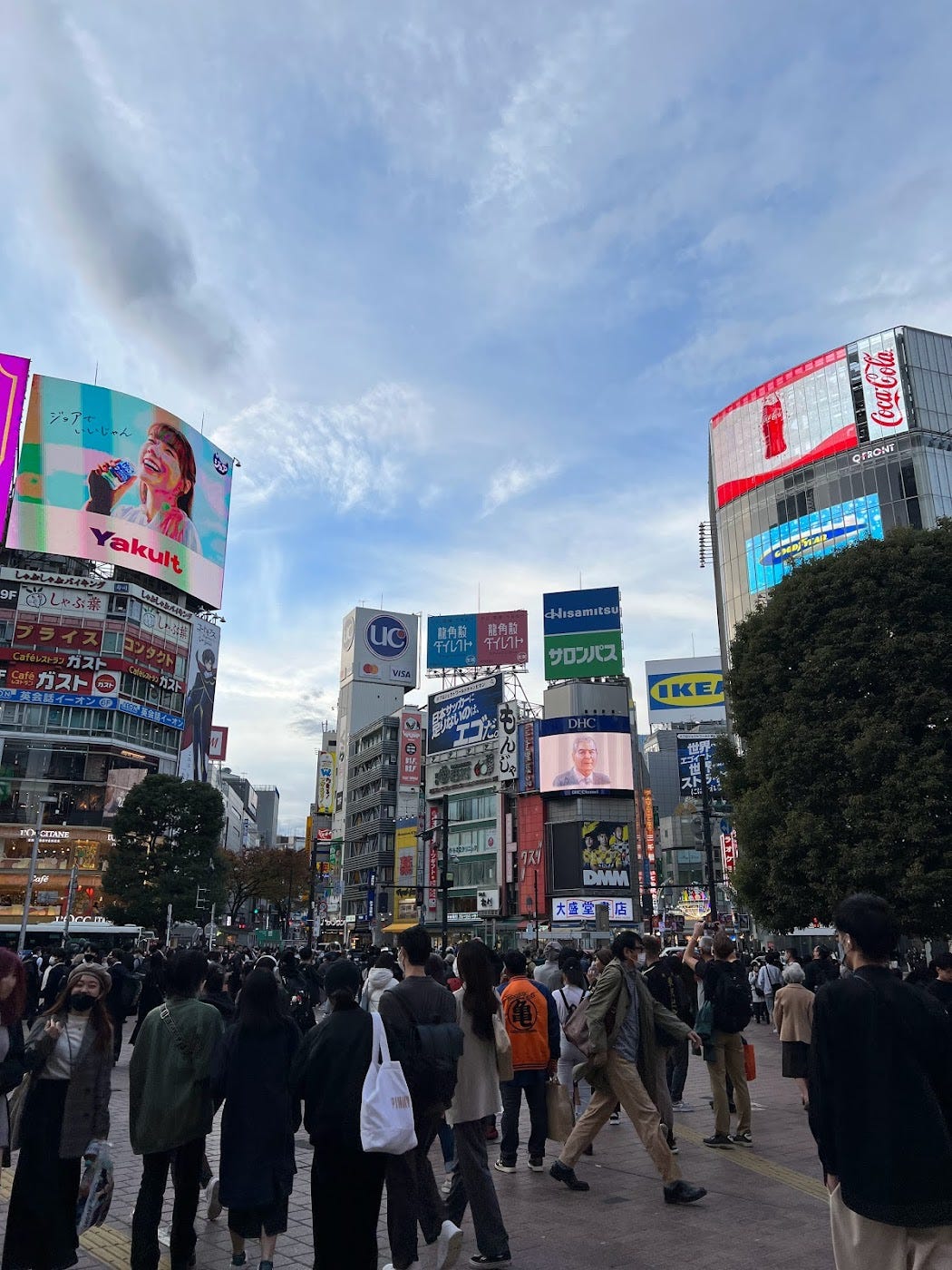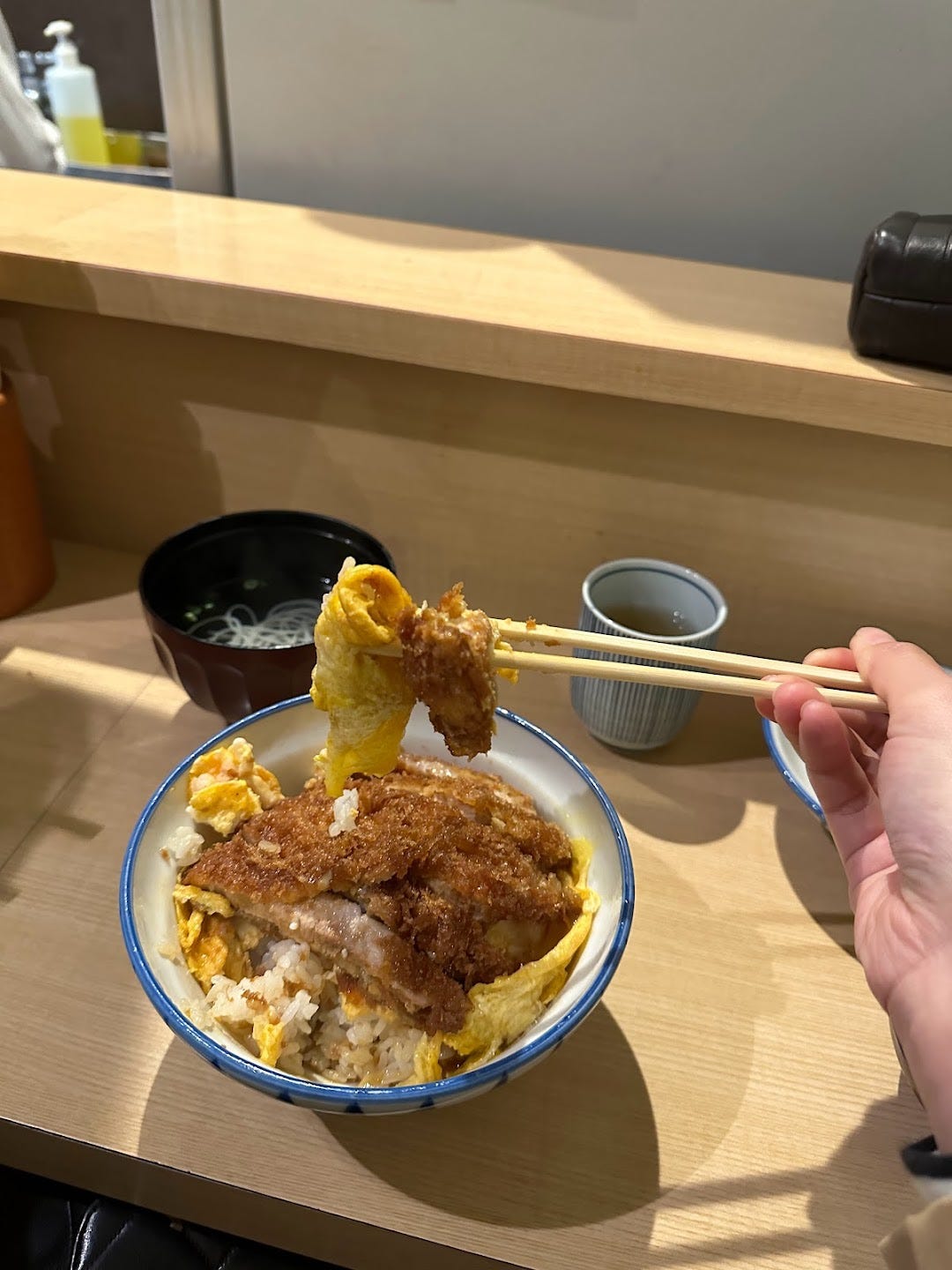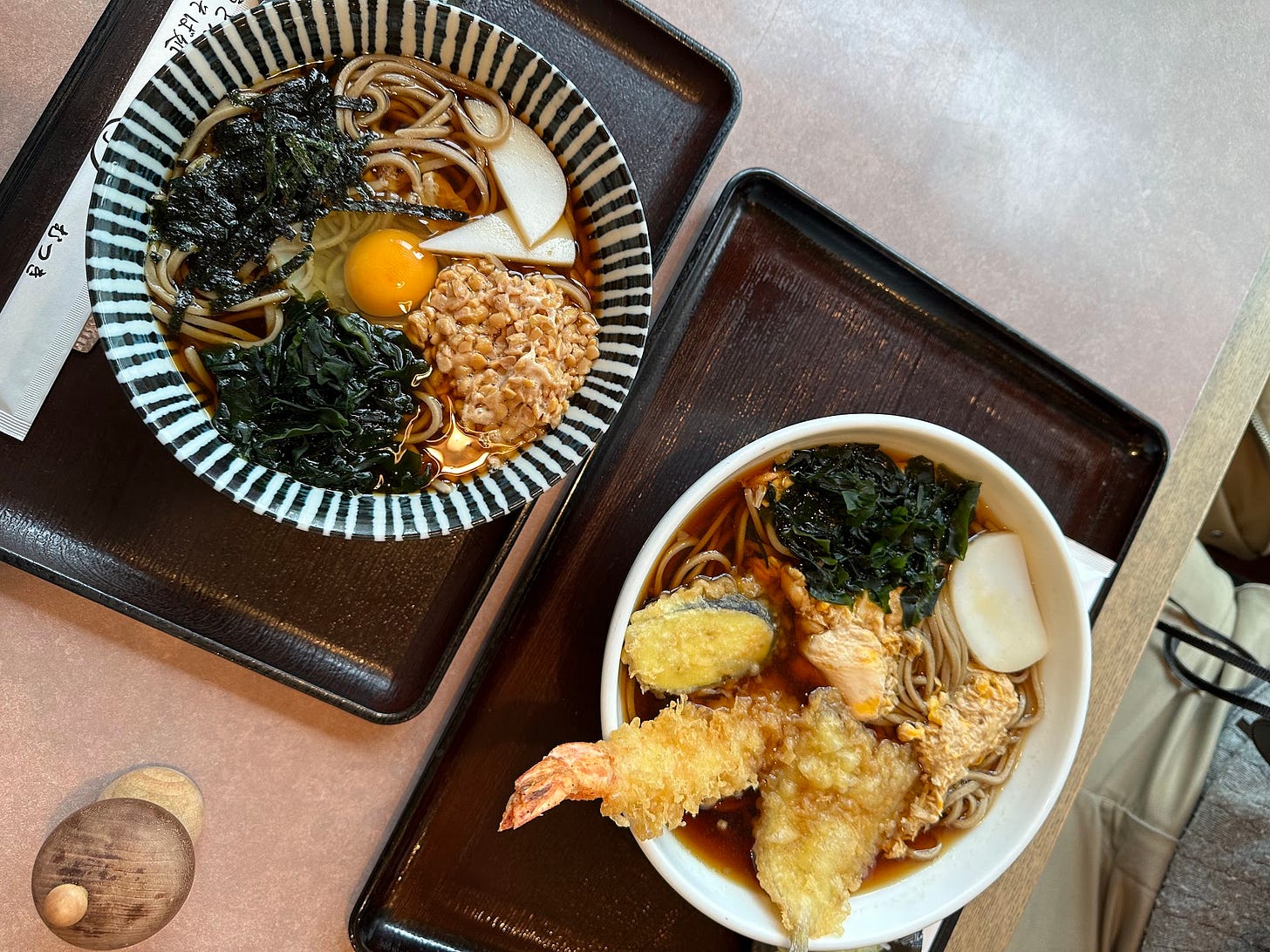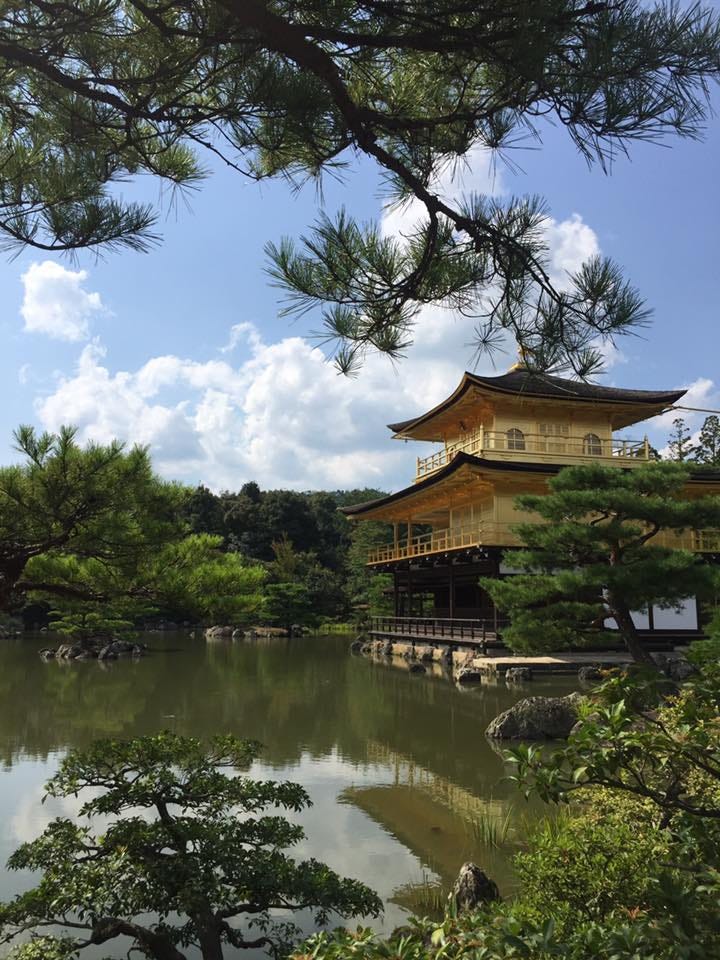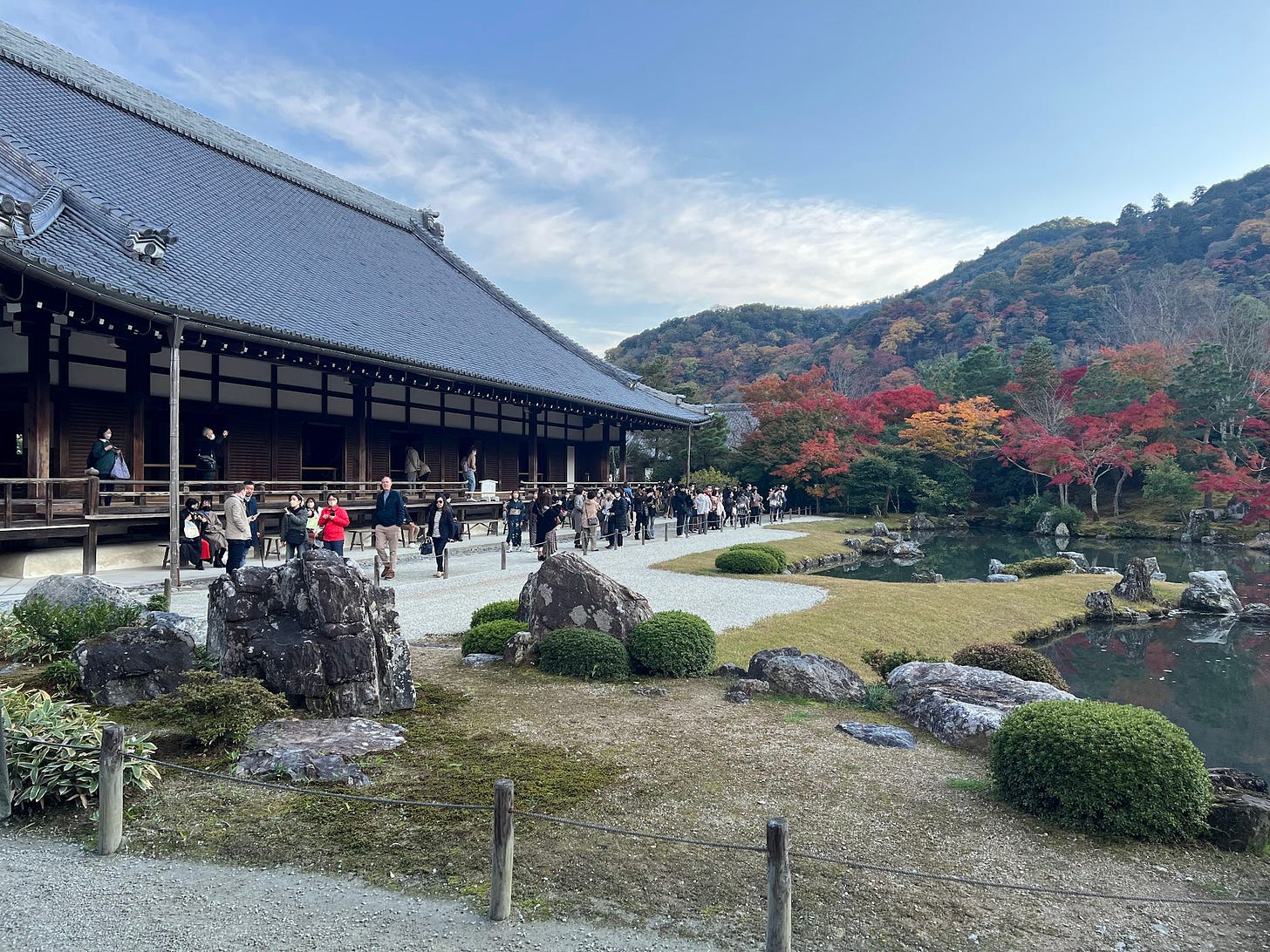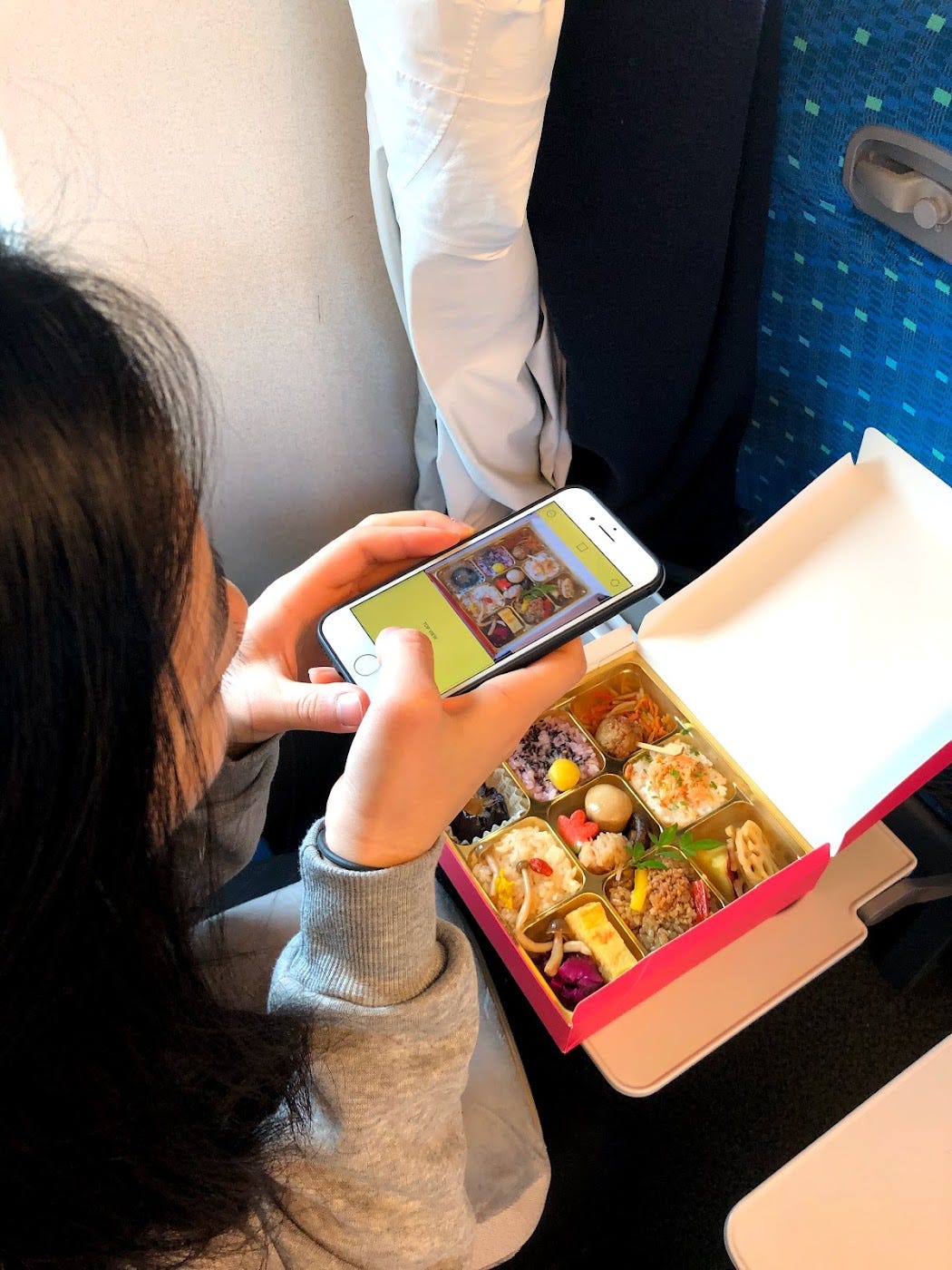Anyone who remotely knows me will know my love for Japan. It’s a country which is known for its varied and delicious cuisine, beautiful traditions, idiosyncratic culture, admirable values espousing impeccable attention to detail and pride in one’s craft… all whilst being one of the most technologically advanced nations on earth.
This suggested itinerary for Japan beginners is the product of my innumerable visits to the country, and assumes that you will fly in and out of Tokyo:
Day 1: Tokyo (arrival day)
Day 2 - 4: Tokyo
Day 5: Hakone / Nikko / Izu Peninsula
Day 6 - 9: Kyoto
Day 10 - 12: Osaka
Day 13: Nara
Day 14: Tokyo (departure day)
If I have you intrigued, allow me to suggest how you might spend 2 weeks during your first trip to Japan…
Day 1: Tokyo - South
TeamLab Planets / Borderless
Roppongi
To describe Tokyo as simply a city seems misleading - it is in fact several cities mashed up into one huge metropolis. This is why you need to give yourself ample time and plan your days efficiently - there is so much to see.
TeamLab Planets in Toyosu makes for a nice any-time-of-day activity to ease yourself into the city. Whilst it might appear to be a tourist gimmick, we were pleasantly surprised by this immersive art experience - it really does make for some amazing photos. You might also want to save this for a rainy day as well since it is all indoors, but make sure to wear either shorts or trousers that can roll up easily - one of the exhibits requires you to wade through water. Make sure to book tickets in advance!
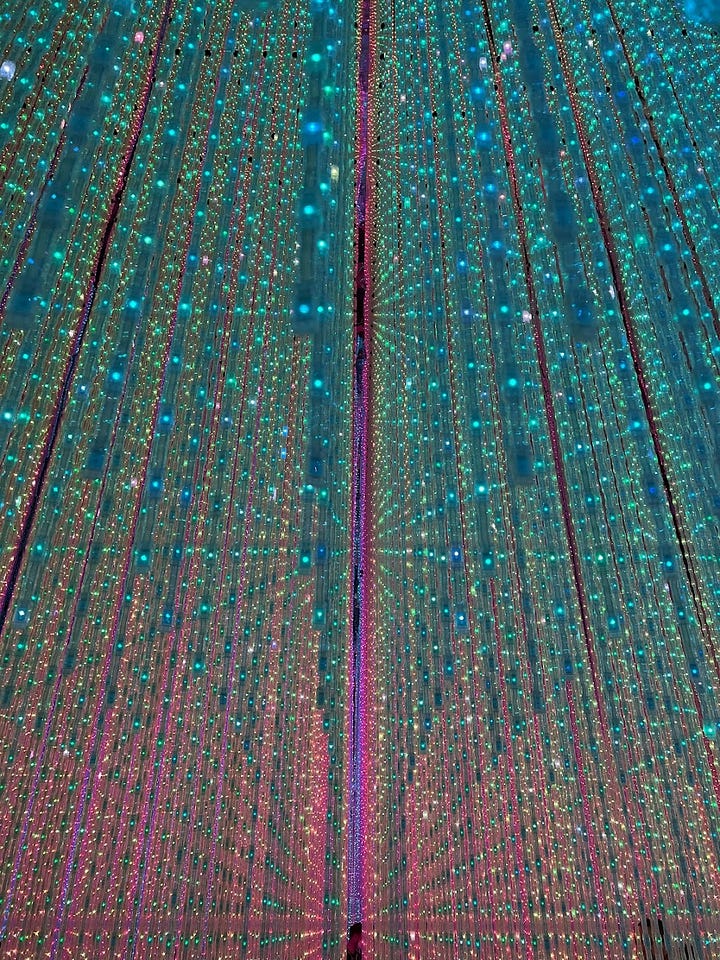

If you don’t fancy getting your feet wet, TeamLab Borderless in Roppongi is a good alternative. This opened in February 2024 so it is very new - whilst I found it to be less crowded than Planets, I did think Planets’ exhibits were more immersive and “out there” than Borderless’, which focused more on projection installations.
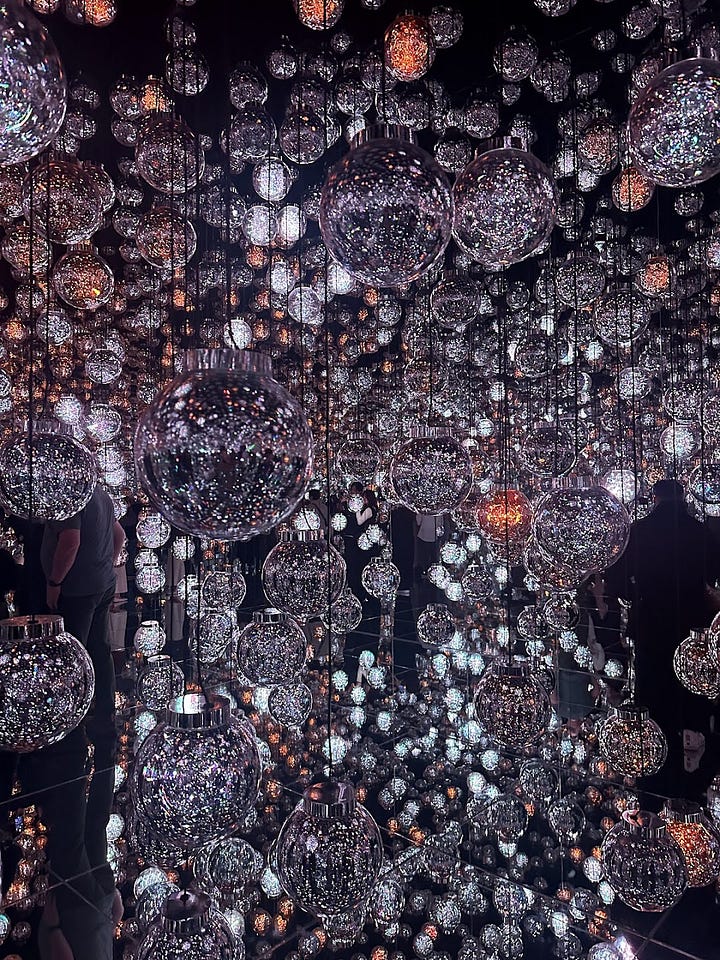
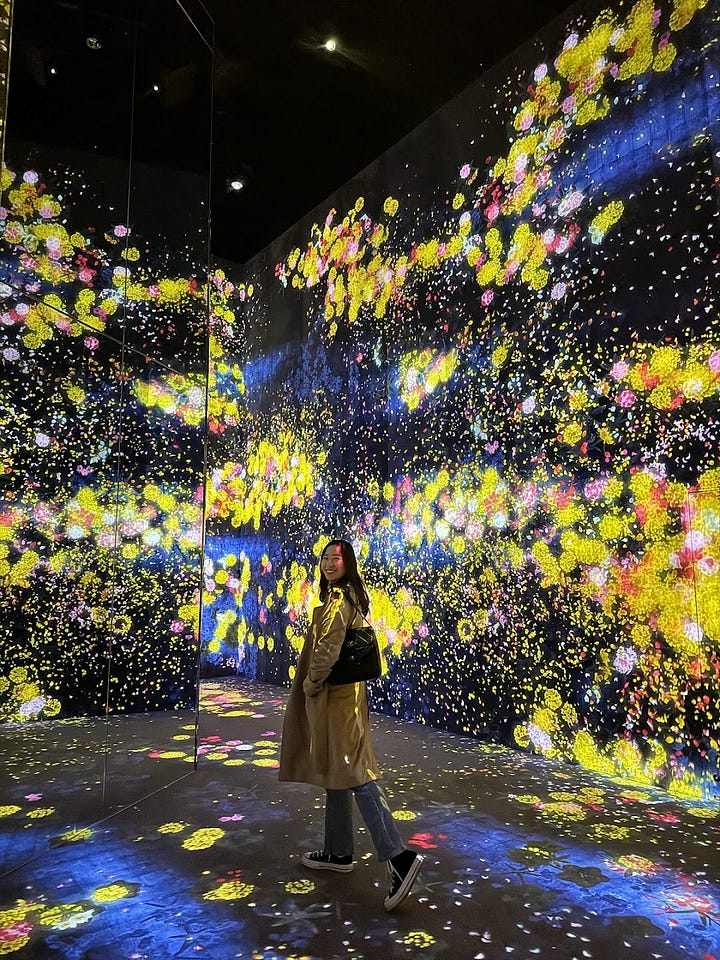
Roppongi is generally a great area to explore - Borderless is located within the swish new shopping complex of Azabudai Hills, and you can catch an amazing view of the whole city from the Tokyo City View observation deck at the top of the Mori Tower. The Mori Art Museum is also a fantastic stop for contemporary art lovers. I was lucky enough to see Shiota Chiharu’s “The Soul Trembles” exhibition here in 2019 and found it very impactful - so be sure to check out what they’ve got on if you’re interested.
Roppongi is also home to some of Tokyo’s best dining establishments. One experience I’d highly recommend forking out for in Japan is a sushi omakase dinner. Omakase means “leave it up to you”, so it refers to any meal where the chef chooses what you eat.
There is a plethora of great sushi omakase restaurants in Tokyo, but I would highly, highly recommend Sushi Nakamura in Roppongi. This probably ranks among the best meals I’ve ever had - it was like watching theatre whilst eating, with the sushi master showcasing his craft with exacting care and attention in front of you. The limited seating all along the sushi bar creates an intimate and serene atmosphere, and each bite I had only deepened my reverence for Nakamura’s skill. More than worth every penny!
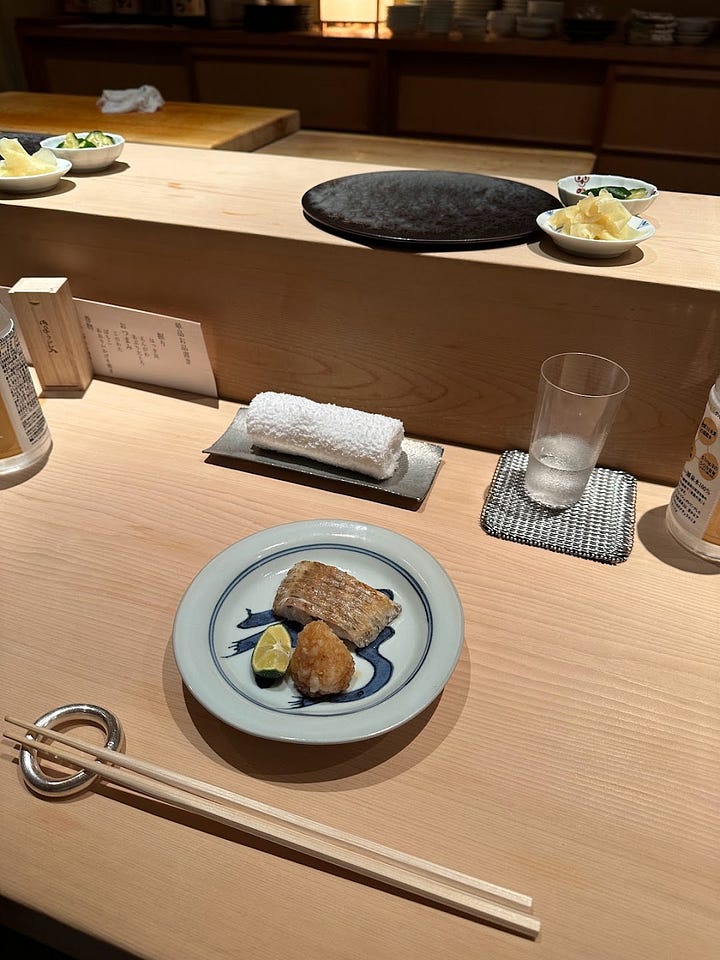
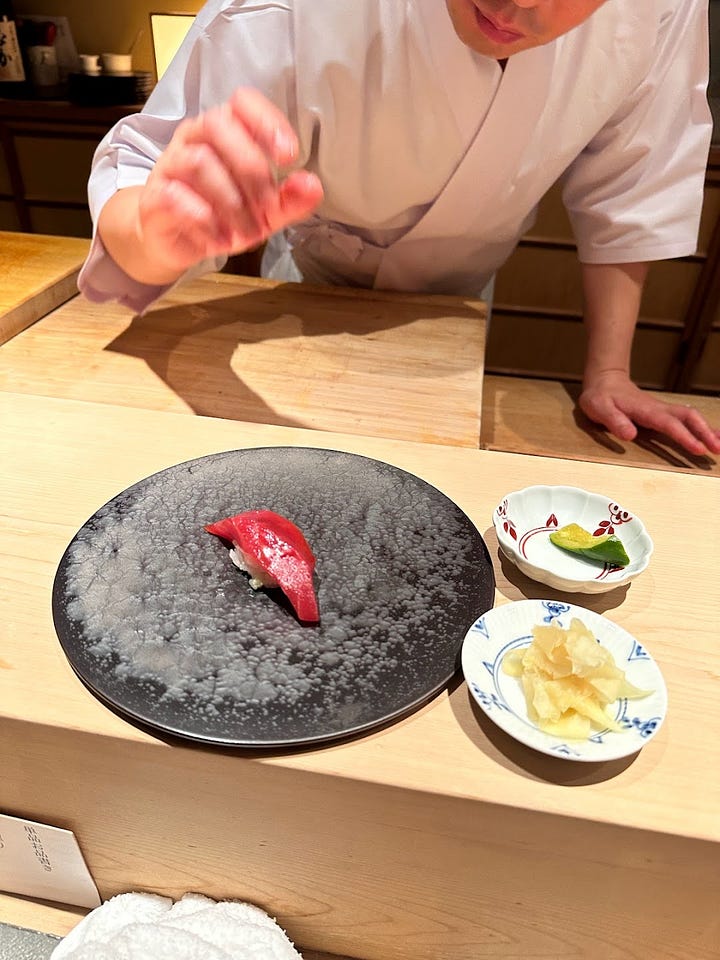
On the other end of the spectrum (but of equal importance to experience, in my opinion) is the ubiquitous conbini, or convenience store. The major brands in Japan include 7-Eleven, FamilyMart and Lawson, and at least one of these can be found on every street.
Conbini are a wonderland of food and drinks exclusive to Japan, including full meals like bento boxes that you can have heated in-store, and the iconic tamago sando, or egg mayo sandwich (my favourite!)
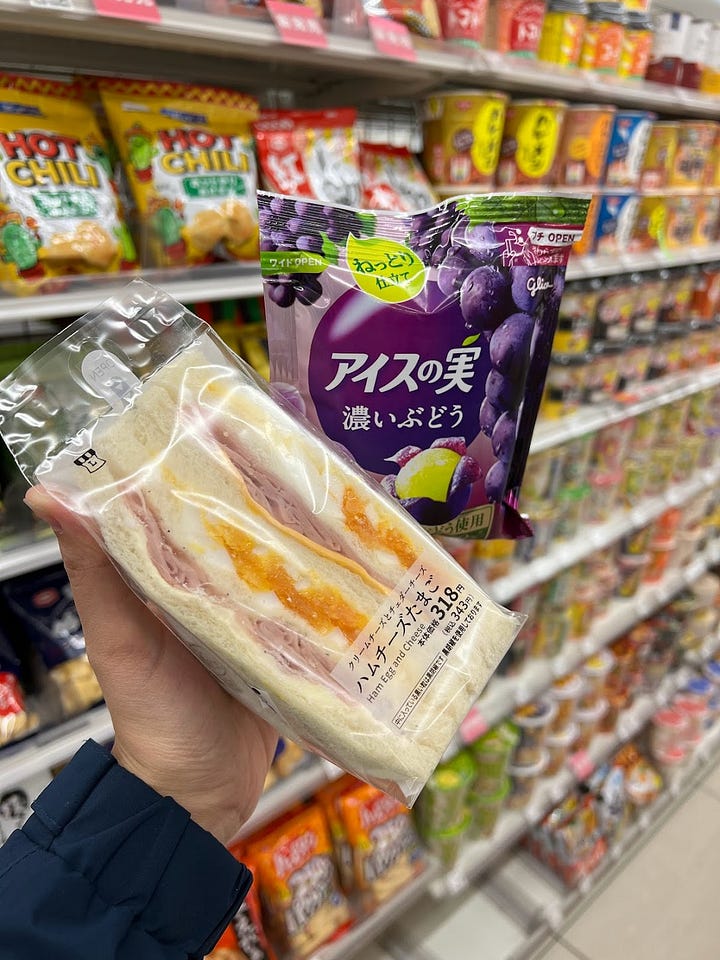
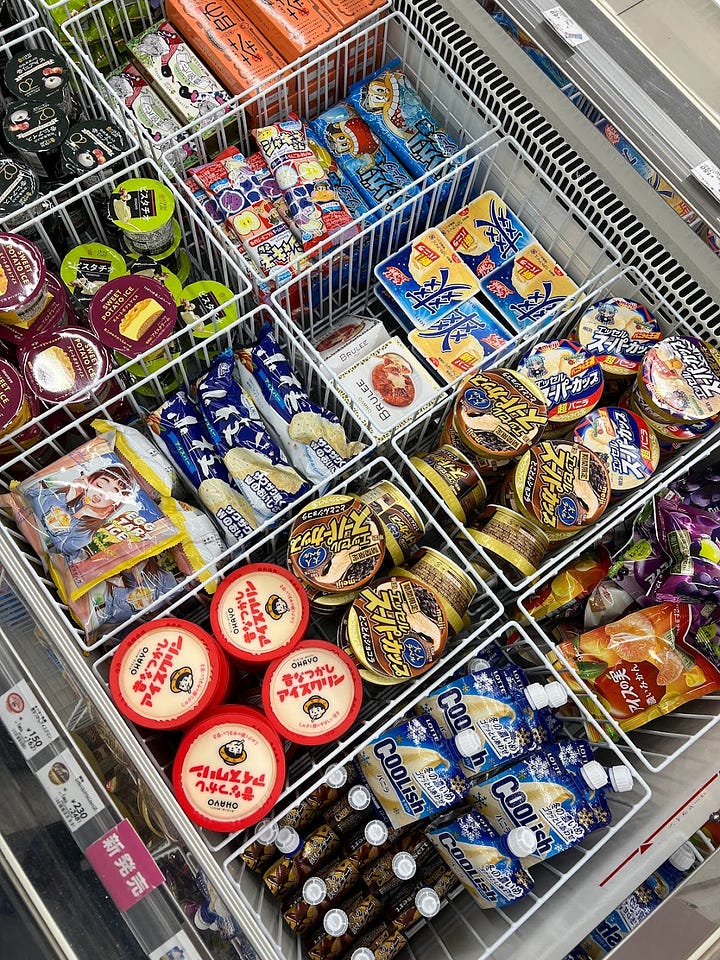
Conbini are also the perfect place to pick up an affordable yet typically-Japanese-high-quality toothbrush, socks, or even underwear if you’ve realised you’ve forgotten something essential on your trip before retreating back to your hotel:
Where to stay in Tokyo
Blowout: The Okura Tokyo. Hands down the best hotel I’ve ever stayed in. Their beds are laughably large and so comfortable that you will be on your way to the land of Nod in no time.
Mid-range: APA Hotel Sugamo Ekimae, or really any APA hotel situated on the Yamanote Line. This chain has standardised basic, clean rooms that do the job.
Day 2: Tokyo - Central / North
Tsukiji
Ginza
Akihabara
Asakusa
For your first ever full day in Tokyo, where better to start than Tsukiji Outer Market? The famous tuna auction used to be held in the Inner Market, which closed in 2018, but the Outer Market with its stalls and restaurants is still very much alive and kicking.
After snacking at the food stalls, check out Uni-Tora for a sit-down meal, which specialises in kaisen-don (fresh sashimi on a bed of rice) with uni, or sea urchin. There is nothing more luxurious than the creamy, subtly briny taste of fresh sea urchin on warm sticky rice.
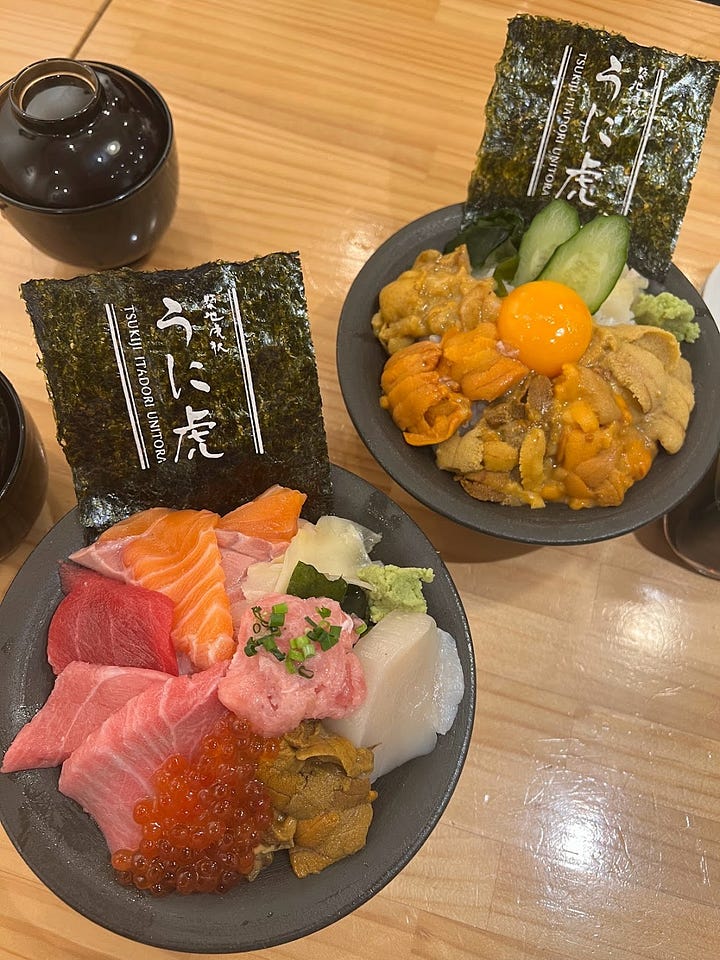
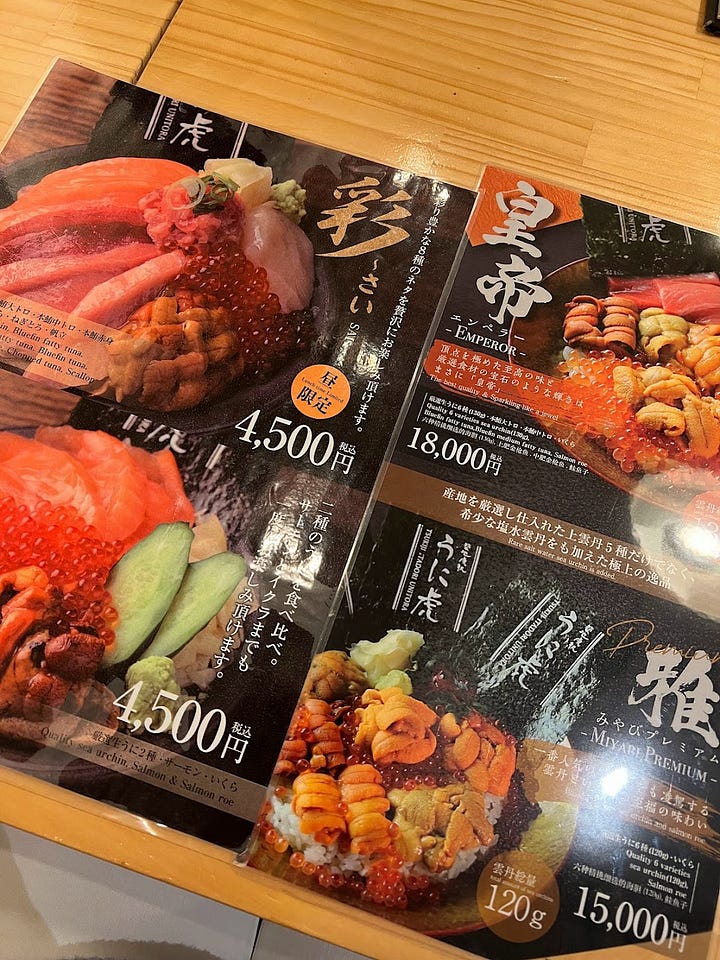
After eating your way through Tsukiji Market, take the opportunity to walk it all off by heading towards Ginza (about 15 minutes by foot). Ginza is the Knightsbridge of Tokyo, being full of high end shops and ritzy department stores. It also contains many flagship high street stores, including those for Muji and Uniqlo.
As with most of Japan, I’d recommend just strolling through and exploring - but don’t miss Itoya. This multi-storey building is dedicated to the finest Japanese stationery, from gel pens and mechanical pencils to intricate pop-up cards and unique scrapbooking materials. I stock up on all my stationery here every time I go, and I’ve found nothing comes close to Japan in terms of product quality and design.


Another must-do is Ginza Mitsukoshi, specifically its basement - because the basement is where you will find the food court, or depachika. In fact, every department store in Ginza will have a food court, so make sure to wander through one and admire the gourmet goodies on display. It’s a particularly good place to go if you’re looking for food souvenirs or a gift to bring to a Japanese person’s home!
Once you’ve done your fair share of shopping, take a well-earned break at Ginza Sembikiya - a fruit specialty shop and dessert parlour that does delicious parfaits.

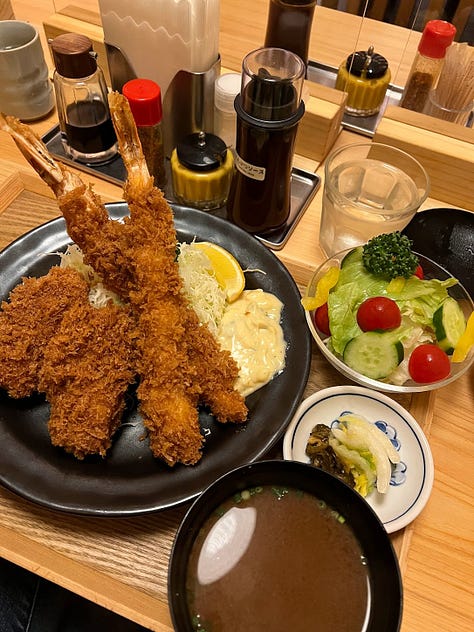
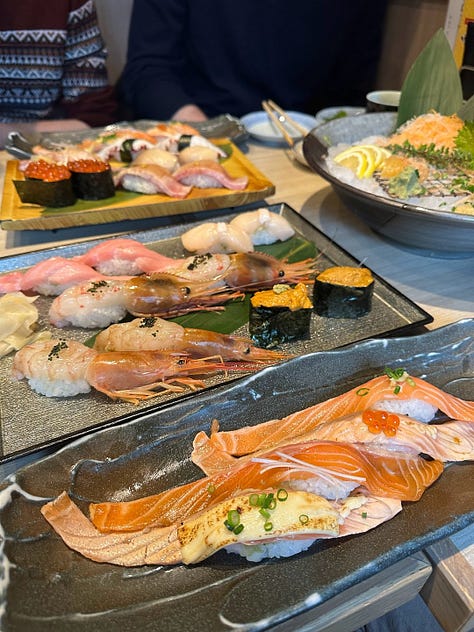
If you’re looking for a proper meal, I’d recommend Ginza Bairin for its hearty and delicious tonkatsu dishes, and Sushi no Midori Ginza for affordable, high quality sushi. There will likely be a long queue trailing out of both these places, but it’ll be worth the wait!
From Ginza, continue upwards to Akihabara, a mecca for electronic goods, anime lovers and maid cafes. Even if you’re not an anime fan, this is still a district worth visiting during your first trip to Tokyo if you have time.
Yodobashi Camera is one of the main attractions of Akihabara, being a multi-storey shopping mall for all sorts of Japanese electronics and gadgets. If you want anything that’s electronic, you’ll find it here, tax-free. The French Toast Factory on the 8th floor is a great place to rest your feet while here - they do excellent souffle pancakes and indulgent French toast (not too sweet, of course - the Japanese have mastered desserts).
I’d also highly recommend popping into a game arcade whilst in Akihabara - there are plenty scattered around, easily distinguishable by the rows of crane game machines at the entrance enticing people off the streets. Try to win a plushie in a crane game, take some purikura sticker photos with your friends - or just watch the pro gamers mash keys at impossibly rapid speeds.
Of course, Akihabara is known for its more adult-leaning attractions… for those curious, M’s: Pop Life and Love Merci both have floors and floors of hilariously perverse goods to ogle at (some floors are even barred to women!)
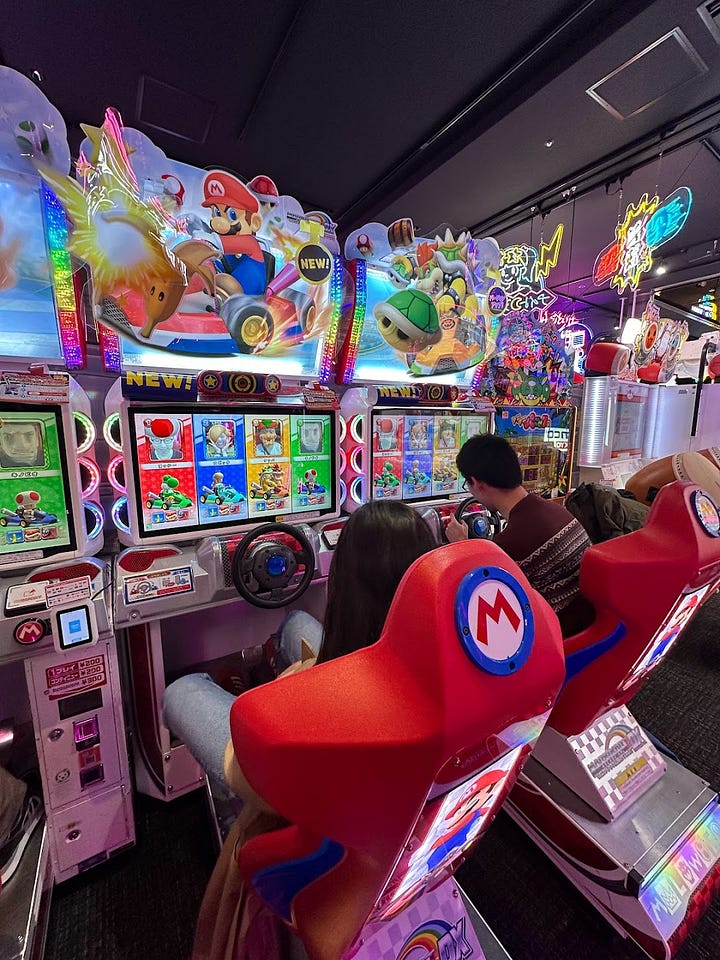
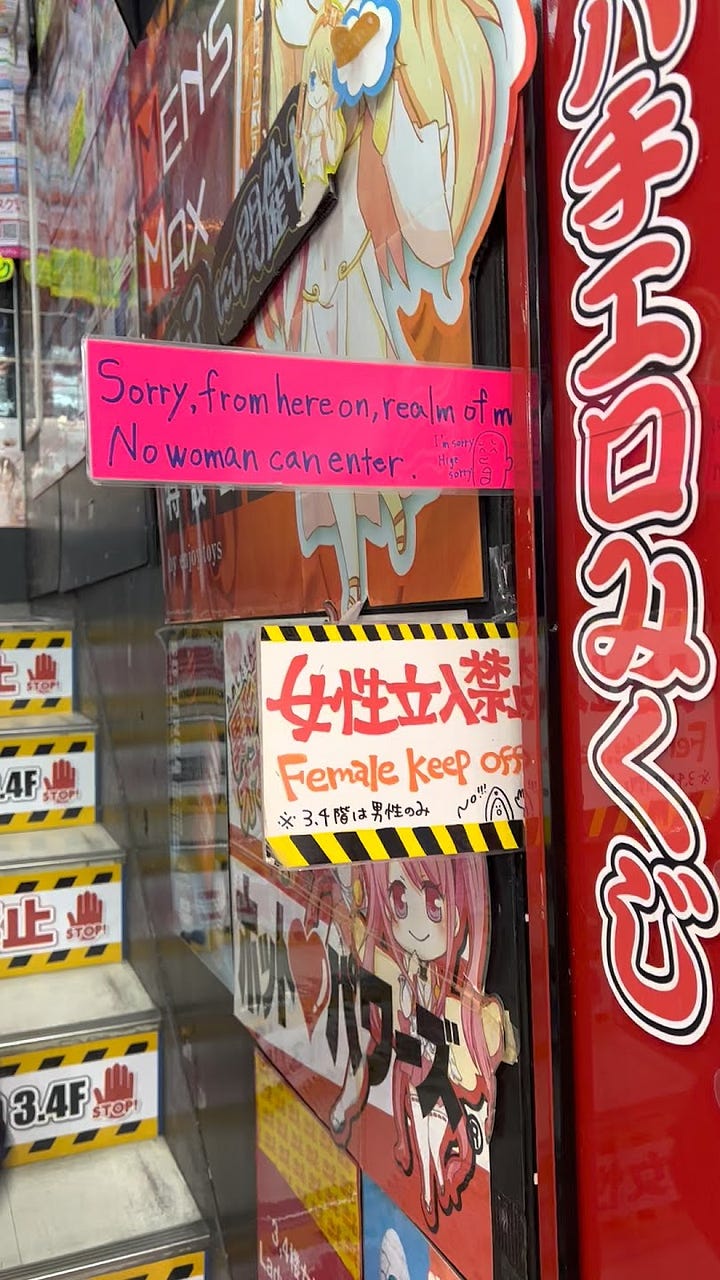
Once you’re done exploring Akihabara, head to nearby Yushima Tenjin temple, which hosts their plum blossom festival every year from early February to early March. This is one of the rare spots where you can see beautiful blossoms outside of peak season, so I’d highly recommend visiting if you’re here during the festival.
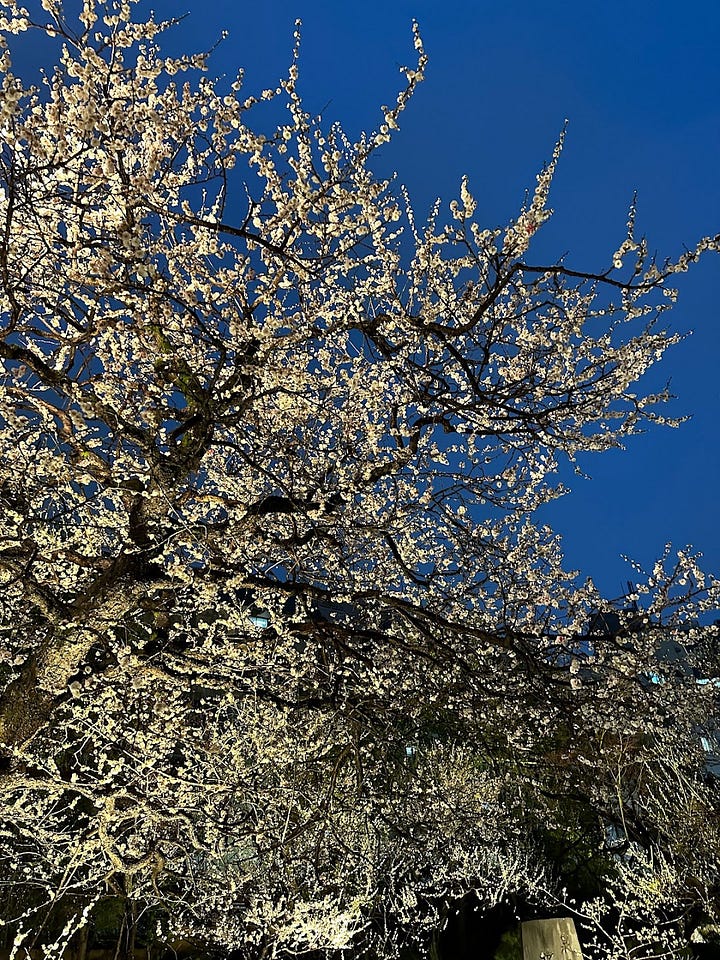
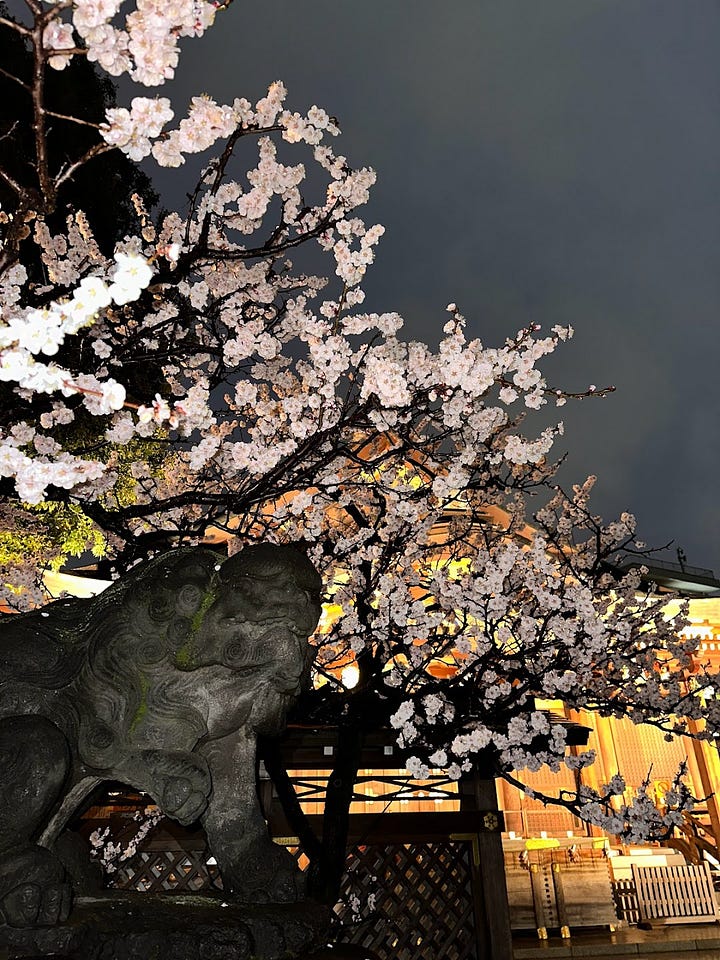
Alternatively (or additionally), head towards the old-world district of Asakusa where Tokyo’s most iconic temple, Senso-ji is located. In my opinion, the pagoda and main temple building is particularly beautiful at night. Take your time exploring the surrounding shopping streets, including Nakamise-dori that leads up to the temple, but note that most of the stalls close pretty early at around 5pm.

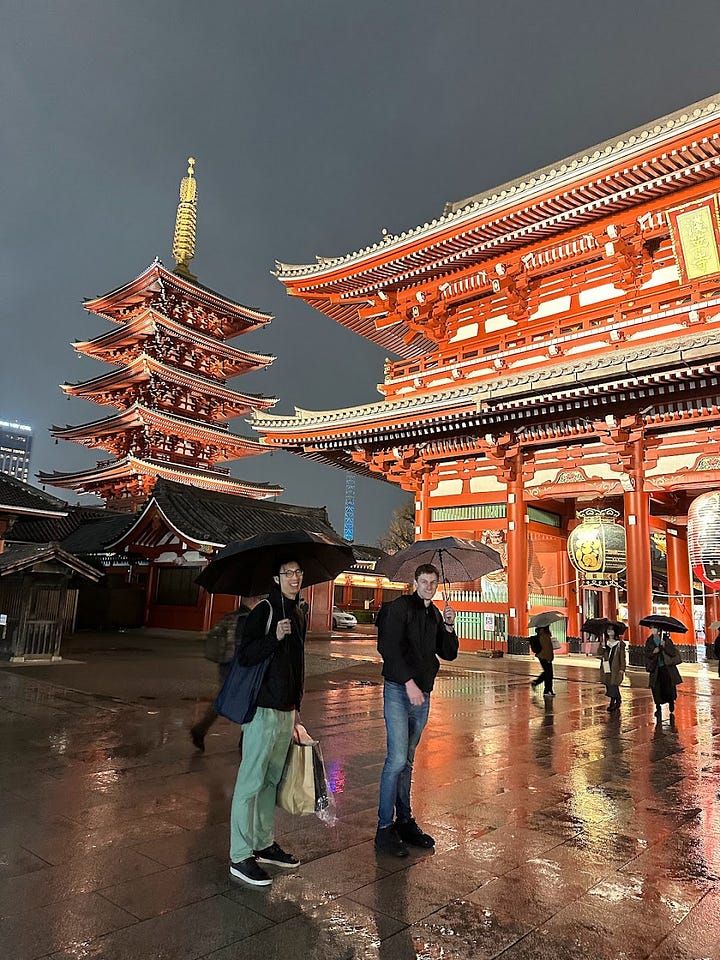
Day 3: Tokyo - West
Omotesando
Harajuku
Shibuya
Gotoku-ji
Start at Omotesando, Tokyo’s answer to Paris’ Champs-Élysées and LA’s Rodeo Drive. Even if you don’t fancy splurging on the high-end designer brands here, this is undeniably a beautiful neighbourhood that is architecturally stunning.
For people who still want to pick up something special on a more economical budget, hunt around the second-hand designer stores in this area - Ragtag and Vintage Qoo Tokyo are probably the most well-known, but the best deals are hiding away in the smaller stores located above ground-floor shops!
If you need a pick-me-up, The Matcha Tokyo makes for a perfect spot to rest and enjoy high quality matcha drinks and snacks, including their inspired matcha croffle (croissant x waffle) with matcha milk jam.
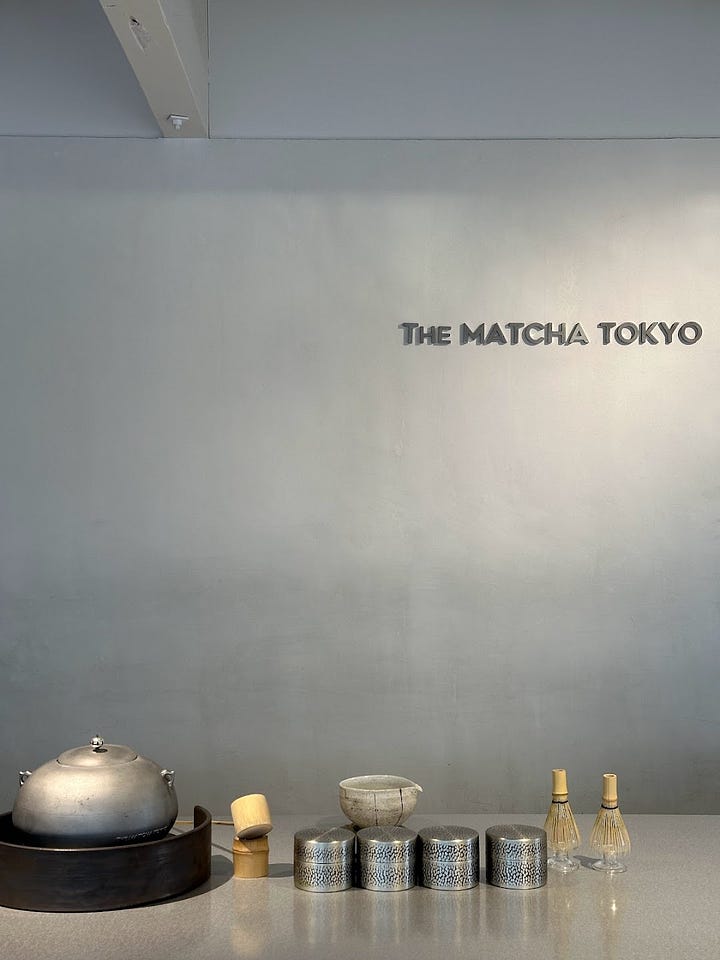
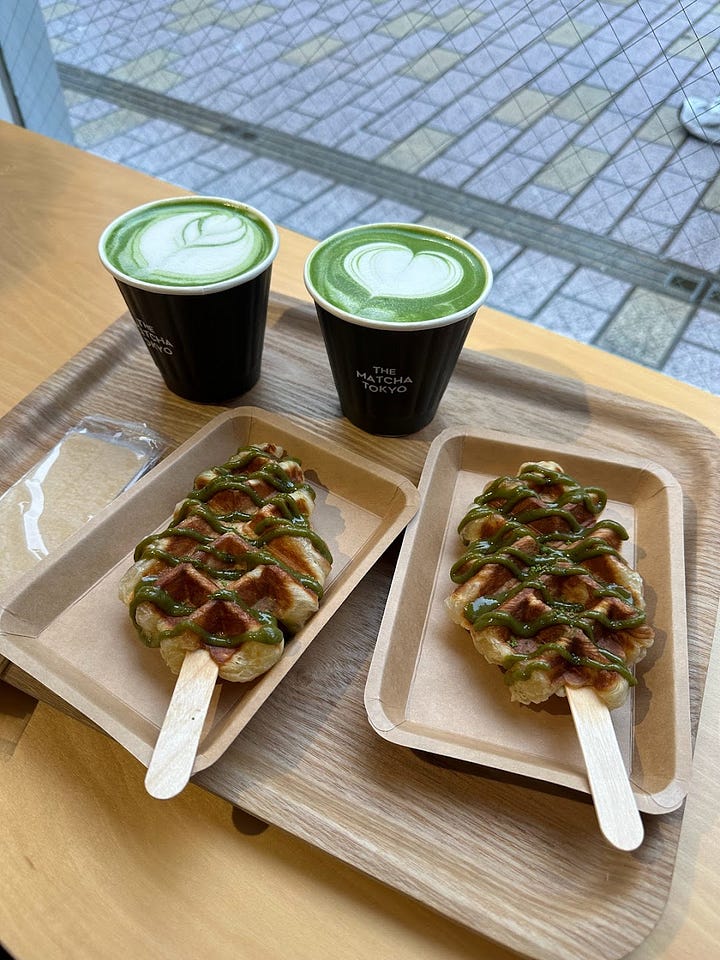
Adjacent to Omotesando is the district of Harajuku, known for being the centre of Japan’s most outlandish and current street fashion trends. The main draw of Harajuku is Takeshita Dori, which is lined with clothing shops and Insta-famous crepe stalls. It’s definitely worth walking through, but bear in mind it can get congested particularly towards late afternoon / early evening.
Another worthwhile stop is the flagship Cosme store in Harajuku, which is Japan’s answer to Sephora, stocking all manner of skincare and makeup items. Cosme is unique in that they rank products by popularity, which is very useful for victims of choice paralysis!
Of course, if you’re inclined to, pop your head into Harajuku’s shopping malls, such as Laforet Harajuku. These malls are definitely skewed towards a trendy teen audience so the clothes might not be to everyone’s taste, but it’s still fun to see how admirably irreverent Japanese fashion is.
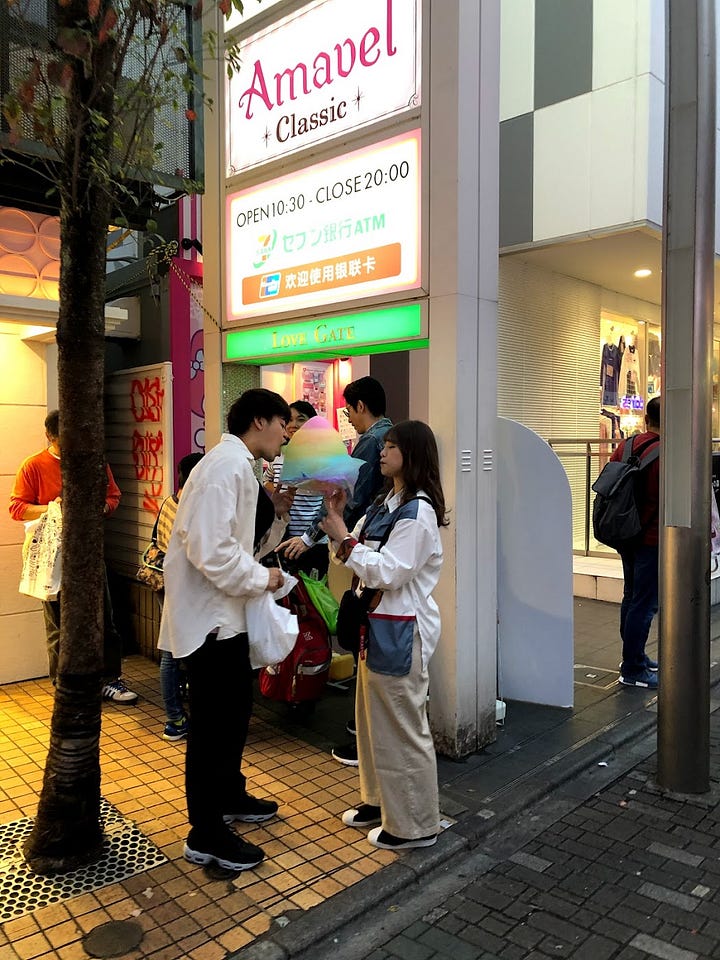
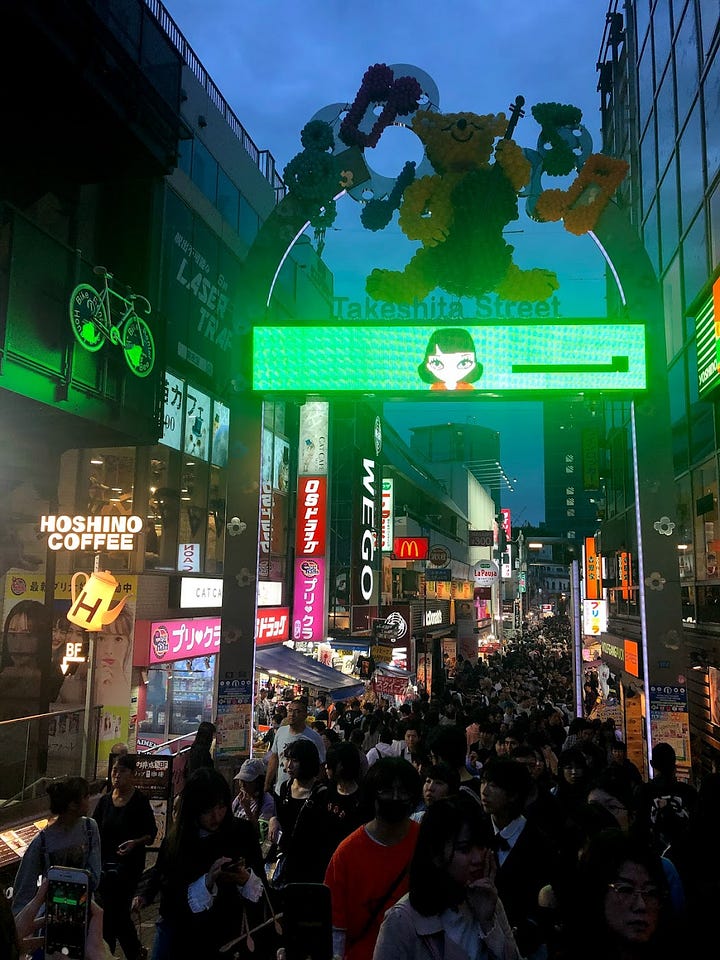
You can’t go to Tokyo without seeing the world famous scramble crossing - so of course, you have to go to Shibuya, which is only one train stop away from Harajuku on the Yamanote Line. This will be Tokyo on steroids - the sheer number of people and flashing billboards all adds up to sensory overload in the best possible way.
One of the biggest draws in Shibuya is the Don Quijote flagship store, which is a multi-storey discount store selling everything you could ever want to buy in Japan.
If you’re looking for something a bit more upmarket, the flagship Loft store is also worth stopping by for stationery, home goods and gadgets. Top tip: make sure to bring your passport if you’re anticipating a big shopping day - you can use it to qualify for tax refunds in most shops in Japan.
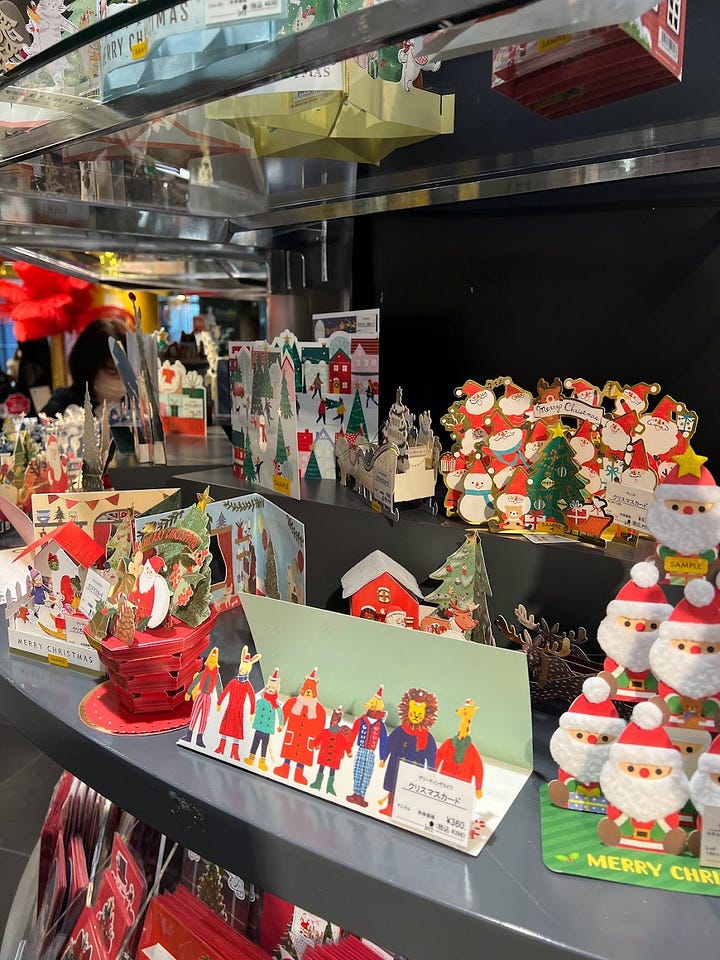

There are plenty of food options in Shibuya - for sushi, there’s a Sushi no Midori Shibuya here (which I haven’t personally tried, although if it’s anything like the Ginza branch, it’ll be excellent), and Uobei Shibuya Dougenzaka for cheap and cheerful conveyer belt sushi.
If you can bear to wait for what may be up to 1.5 hours, then Katsudon-ya Zuicho is well worth walking a little bit out of the way for. This tiny little family-run shop serves only one thing - fried pork cutlet or katsu on rice with egg, which they have perfected.
After a big day of shopping, end the day by making the journey out to Gotoku-ji. This adorable and beautiful temple located in a quiet Tokyo suburb is dedicated to maneki-neko, or the beckoning cat that you often find (confusingly) in Chinese takeaways.
Like most places of worship in Japan, Gotoku-ji is particularly stunning during the autumn, but it’s worth making the trip there any time of year - one of my favourite spots in the city!
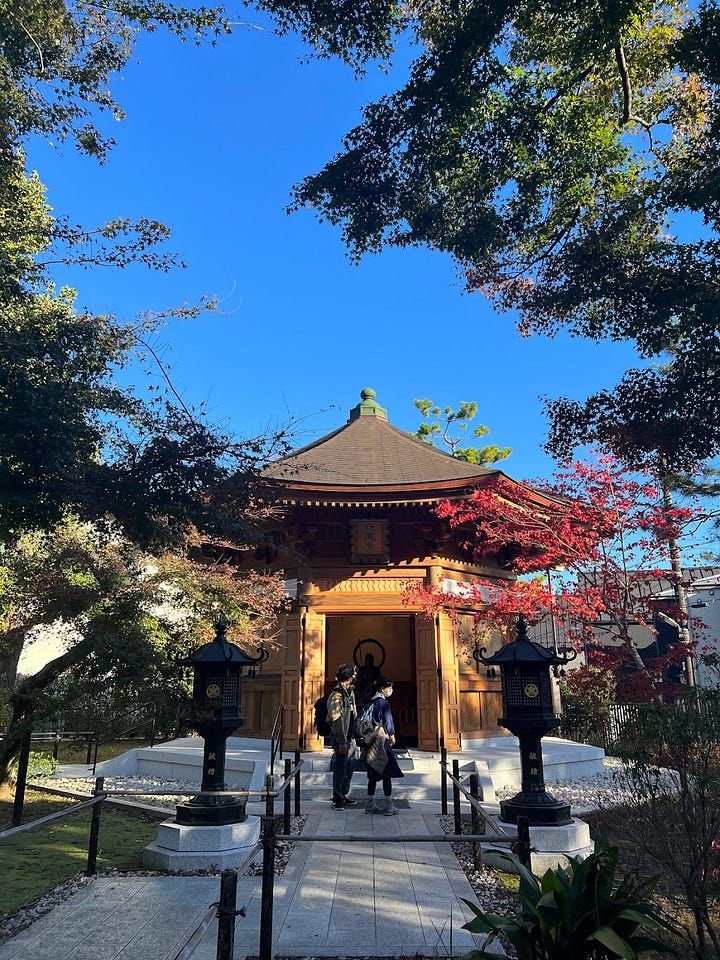
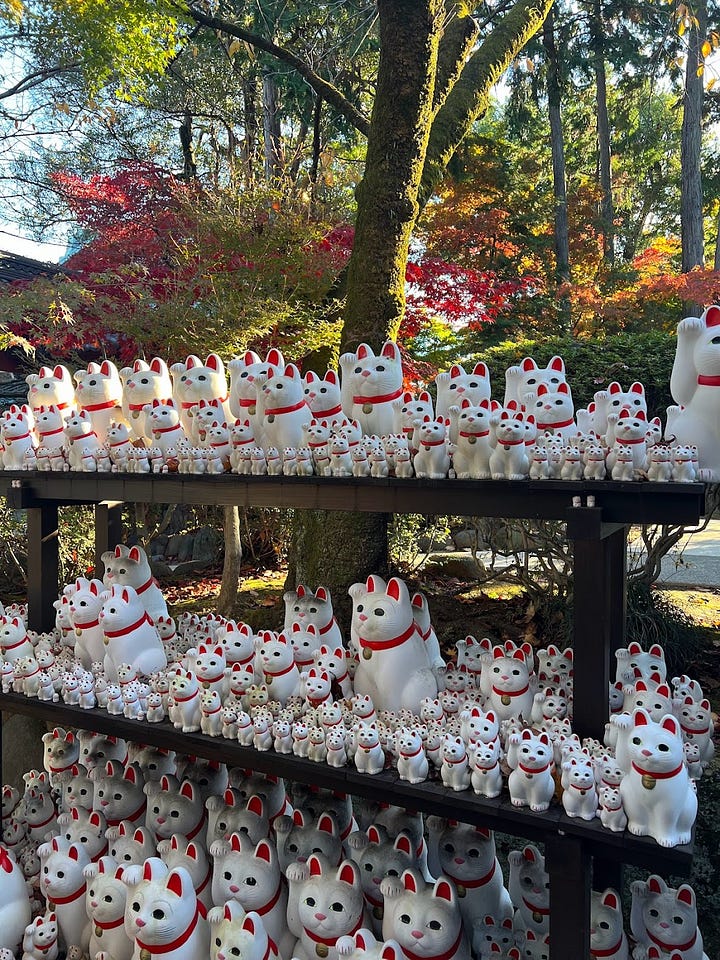
Day 4: Tokyo - further afield
Shimo-kitazawa
Kichijoji
Nakano
Shinjuku
For those who are keen to see more local, off-the-beaten-track neighbourhoods, this day is for you.
Start off in Shimo-kitazawa, which is a laidback, stylish area known for its thrift shopping and hipster vibe. This is exemplified in Bonus Track, a curated complex of cafes, restaurants and art studios, and reload, a shopping haven filled with aesthetic boutiques and eateries.
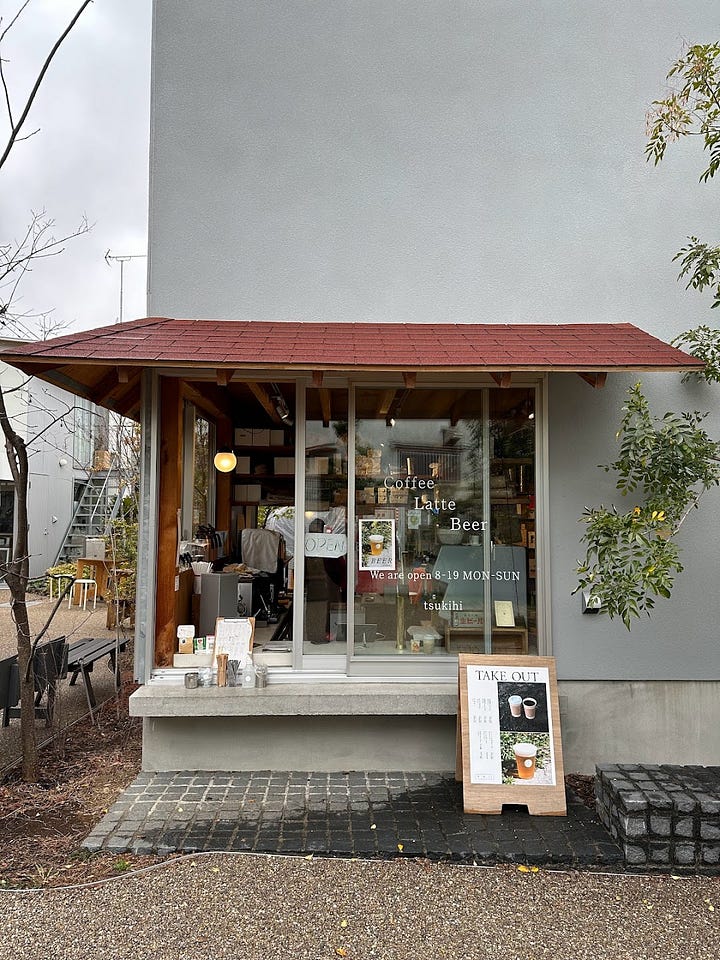
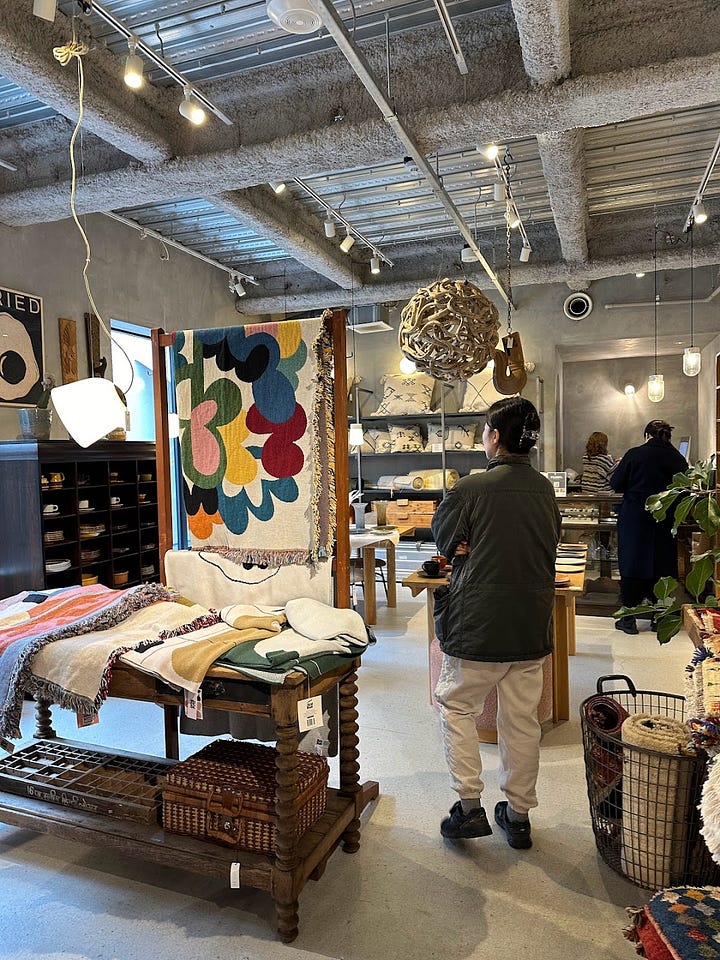
For lunch, I’d highly recommend this lovely soba restaurant called 夢月 (pronounced yu-zuki). While this is very much a spot for locals, they do have an English menu which you can request. I would highly recommend the hot natto (fermented soybean) soba served with a raw egg - the perfect warming bowl that feels like a hug.
Venture further out west to Kichijoji, which is regarded as one of the best residential neighbourhoods in Tokyo. The main draw of this area is Inokashira Park, one of Tokyo’s loveliest green spaces with its lake and iconic swan pedalo boats. It is also a fantastic place to view cherry blossoms and autumn foliage when in season.
Inokashira Park is also home to the Ghibli Museum (although be warned, trying to get tickets for this very exclusive museum is like pulling teeth) and an amusing range of unusual vending machines, selling goods such as canned bread and insect larvae.
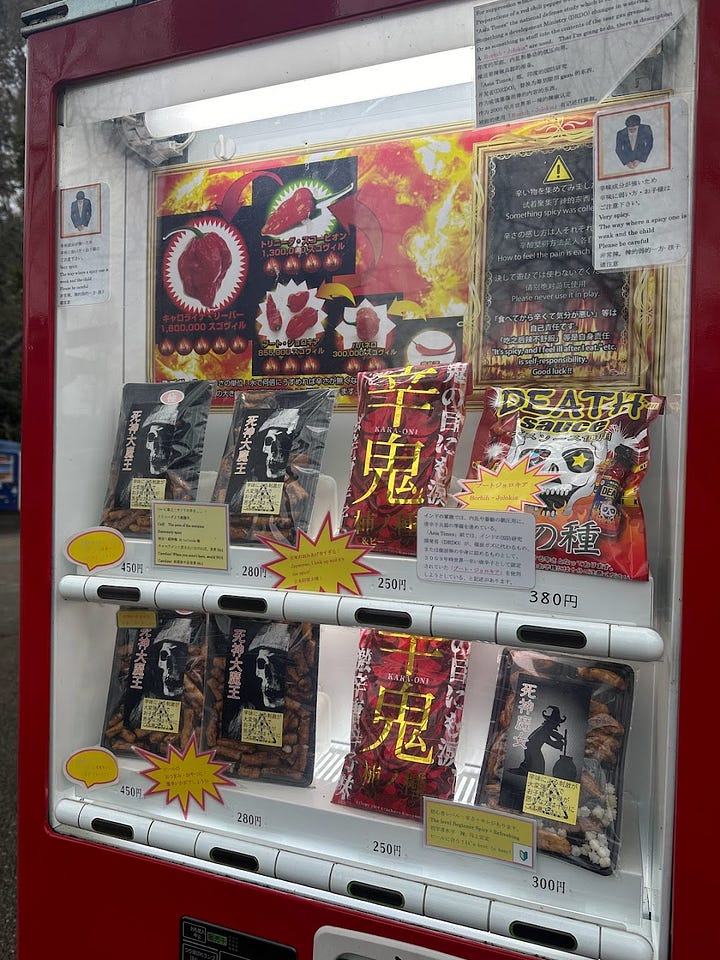
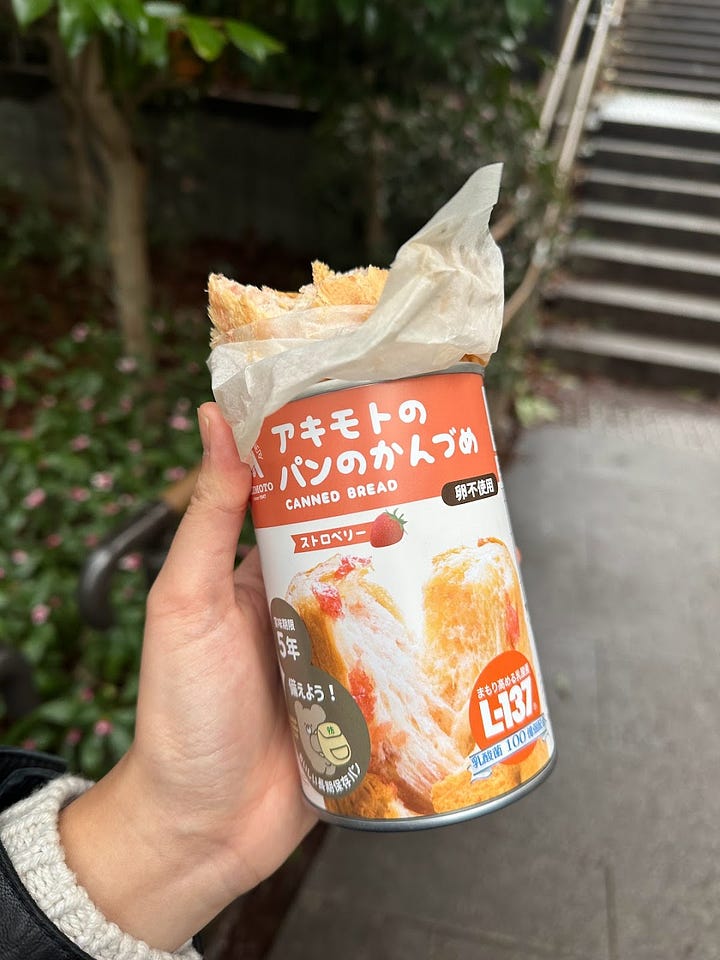
After enjoying the park, be sure to explore the surrounding streets, and don’t miss Kichijoji Petit Mura - a compact collection of feline-themed shops in whimsical fairy-tale inspired buildings.
If you have time to spare, you can stop by Nakano on your way back into the city. Nakano Broadway is an old-school covered shopping street with a focus on anime/comic stores and vintage watch dealers. Definitely a less touristy alternative to Akihabara for those who are into anime!
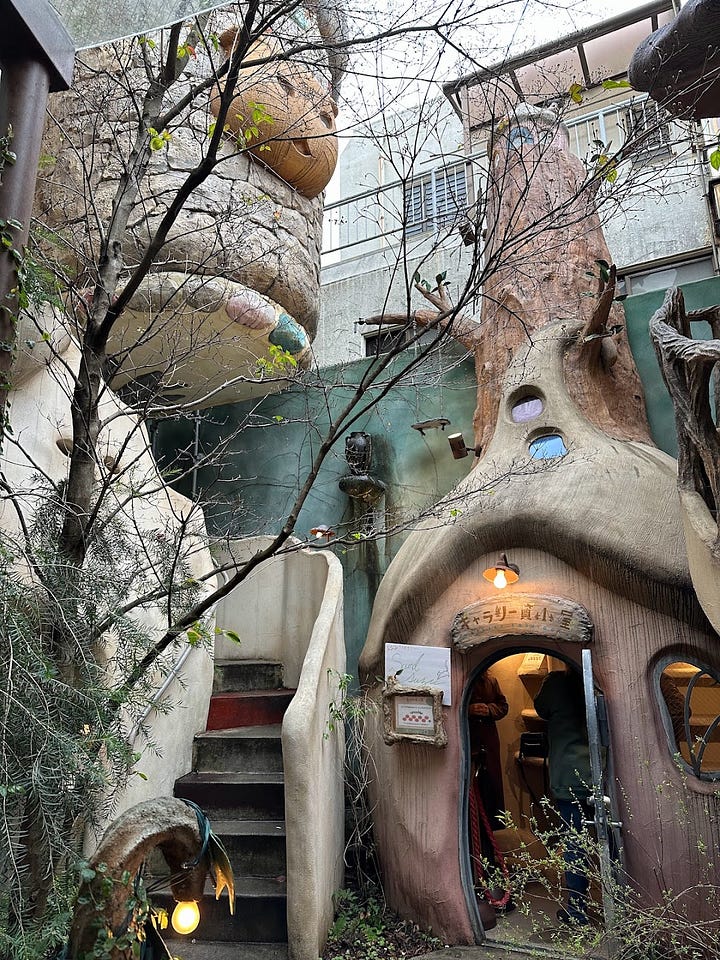
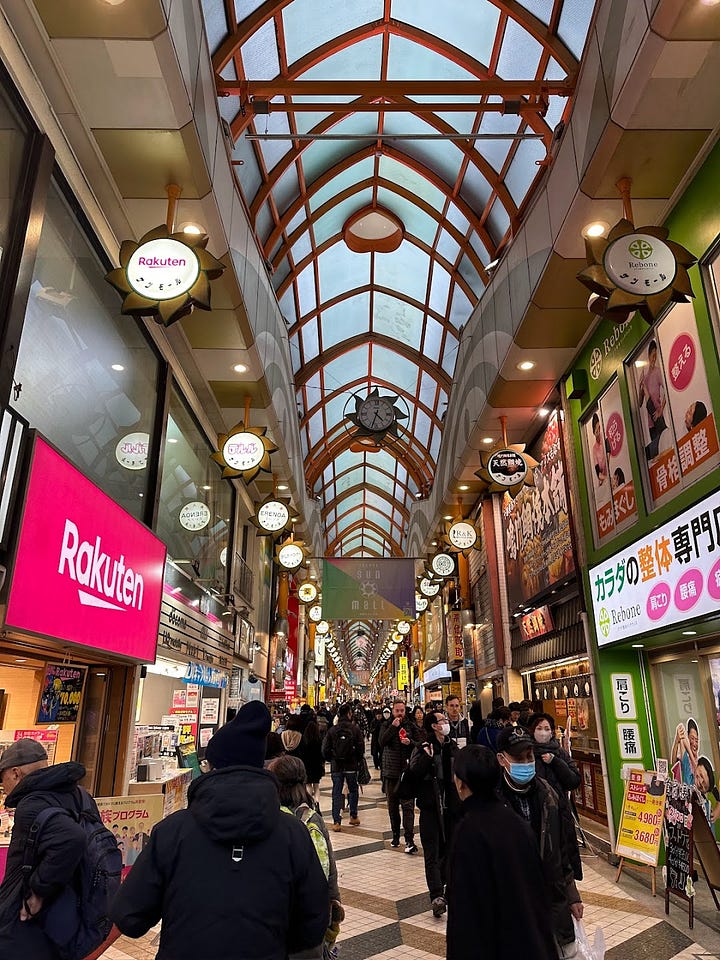
Finally, no trip to Tokyo is complete without seeing Shinjuku, home to the busiest railway station in the world. There are huge department stores surrounding the station, with my favourites being NeWoMan and Takashimaya Times Square. Takashimaya also houses the multi-storey Hands store, which stocks everything you could possibly want to buy. However, if you’re not interested in emptying your pockets, Shinjuku Gyoen offers a very pleasant retreat for those who would rather enjoy a nice walk in beautiful surroundings.
In my opinion, Shinjuku is one of those places that really comes alive at night. For dinner, Mo-Mo-Paradise Kabukicho offers all-you-can-eat sukiyaki or shabu-shabu at an unbeatable price. We chose the sukiyaki option and enjoyed an amazing meal here, fully indulging in the unlimited meat, vegetables, sides and desserts.
Another option is Fuunji, a no-frills salaryman favourite that specialises in tsukemen - chewy, thick noodles dipped into a delicious umami-rich sauce. There is no price difference between sizes, but be warned that the large size is absolutely MASSIVE - most people will be more than satiated with the medium size!
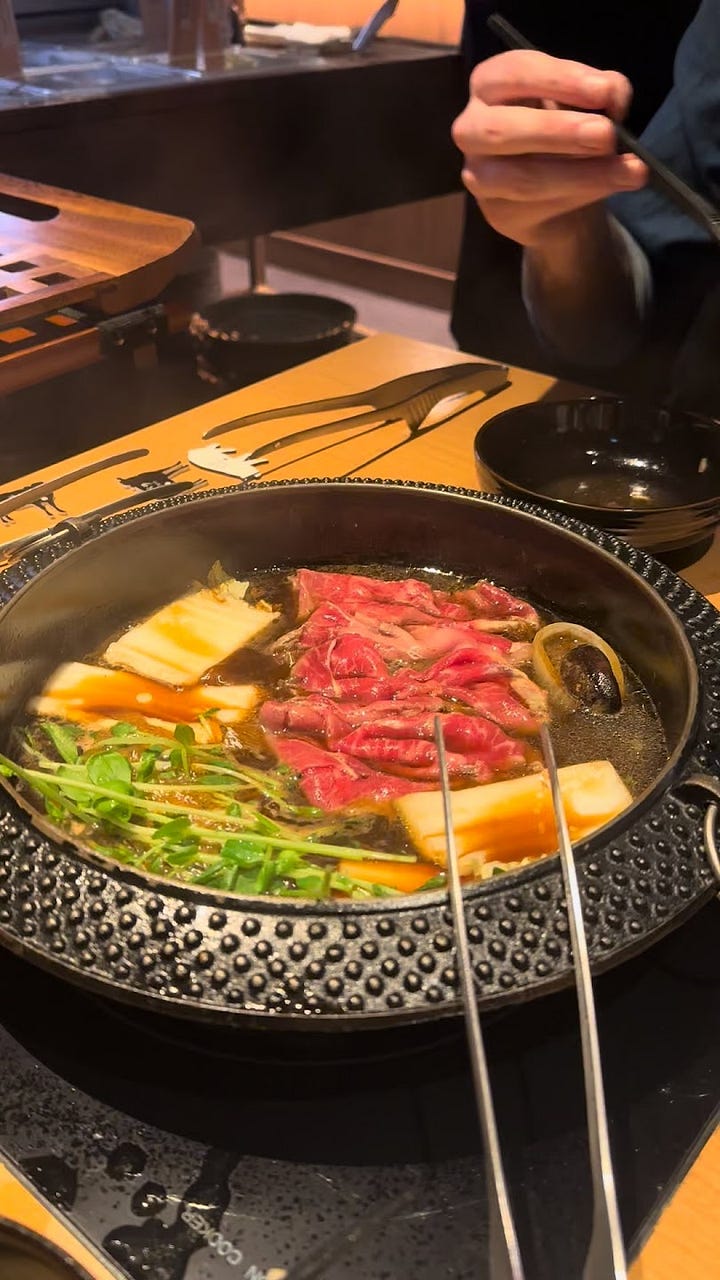
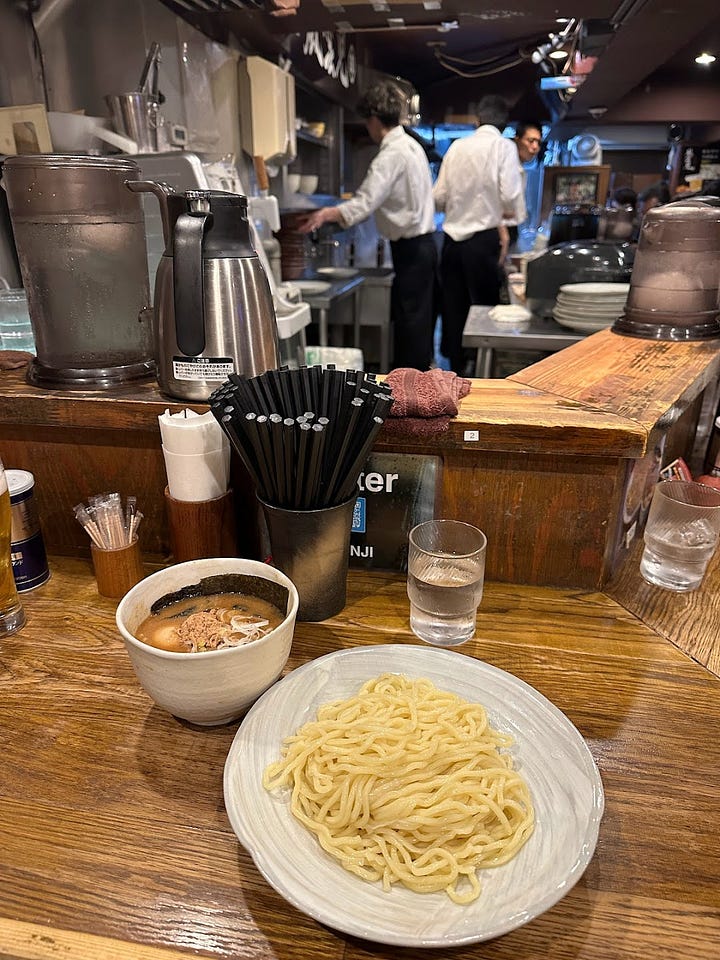
For something more special, do not miss the opportunity to eat at Arakicho Tenpaku. This tiny yet classically beautiful restaurant only seats eight covers at a time and specialises in tempura omakase.
Much like our omakase at Sushi Nakamura, this dinner was an unforgettable experience from start to finish. I had never previously thought of tempura as a way to enhance natural flavours, but in the hands of this chef, the lightness and crunch of the batter feels like a magic trick, with the underlying fish/vegetable all the better for it.
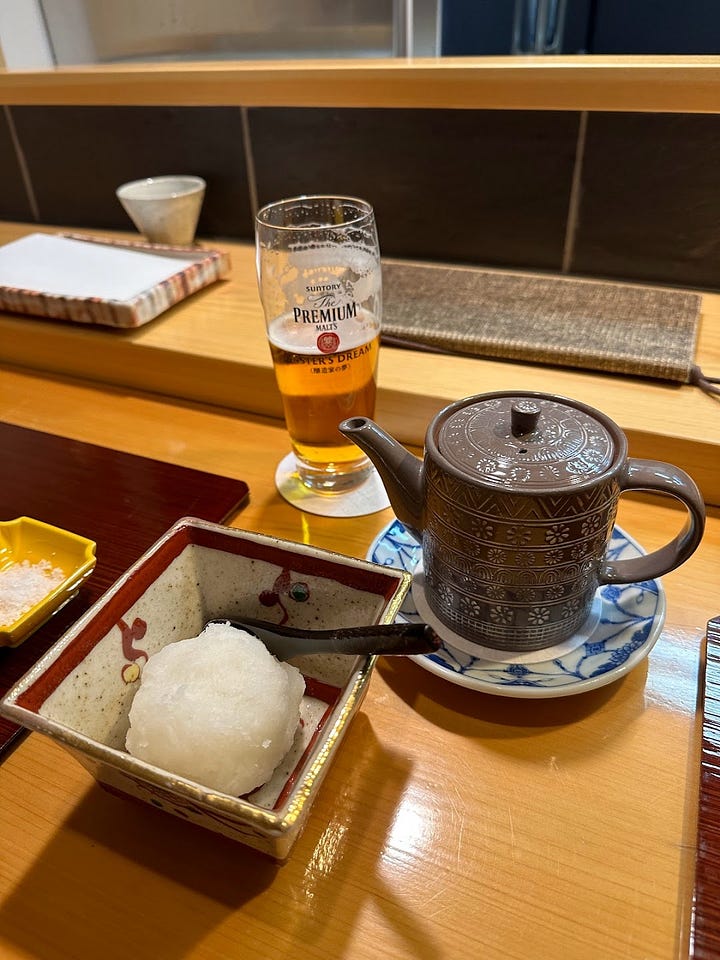
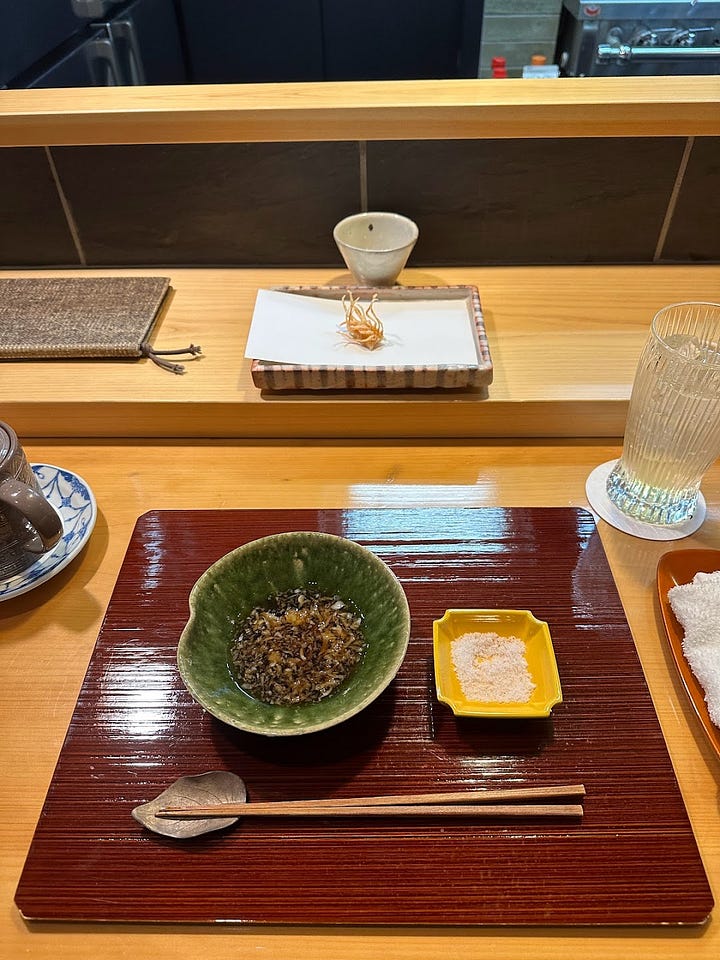
For after-dinner drinks, enjoy a cold beer and some yakitori (flame-grilled skewers) in one of the many small eateries crammed into the historic alleyway of Omoide Yokocho, lovingly known as Piss Alley.
Alternatively, go bar hopping around Golden-gai, a characterful jumble of mismatched yet atmospheric tiny bars that only seat about six at a time, or take a late-night walk around the somewhat seedy (yet still very safe and brightly lit) adult entertainment district of Kabuki-cho. The newly built Tokyu Kabukicho Tower in particular is worth checking out, with its neon-lit food hall, cinema and Namco game arcade floors offering plenty of fun options.
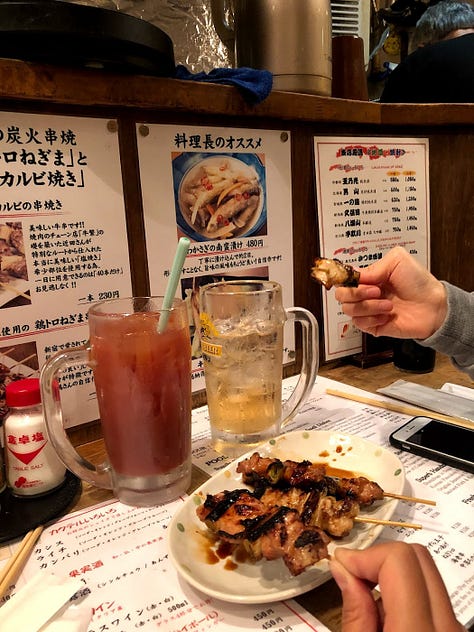
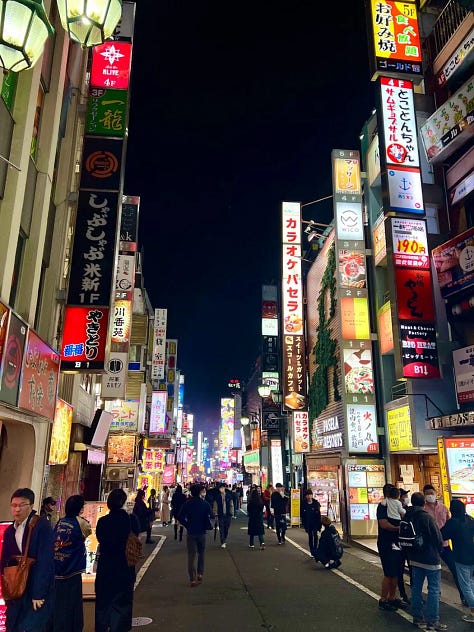
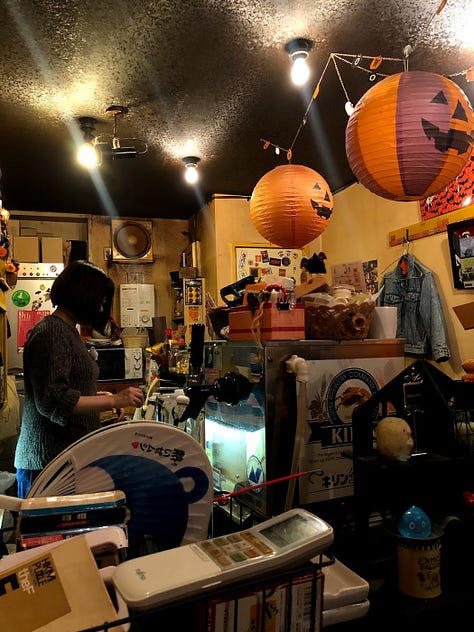
Day 5: Hakone / Nikko / Izu Peninsula
Whilst you may want to remain in Tokyo for this day, you also have the option of doing a day trip or overnight stay somewhere to see a different side of Japan.
Hakone is a hot spring town just outside of Tokyo that is very popular with couples looking for a romantic overnight getaway. One of the biggest draws is Lake Ashi, where on a clear day you can see stunning views of Mount Fuji. There’s also the active volcano zone of Owakudani to explore, and when in Hakone it is mandatory to experience staying in a ryokan (Japanese-style lodgings complete with tatami floors, futons and baths). You can read more about Hakone’s attractions here, and figure out how to get there from Tokyo here.
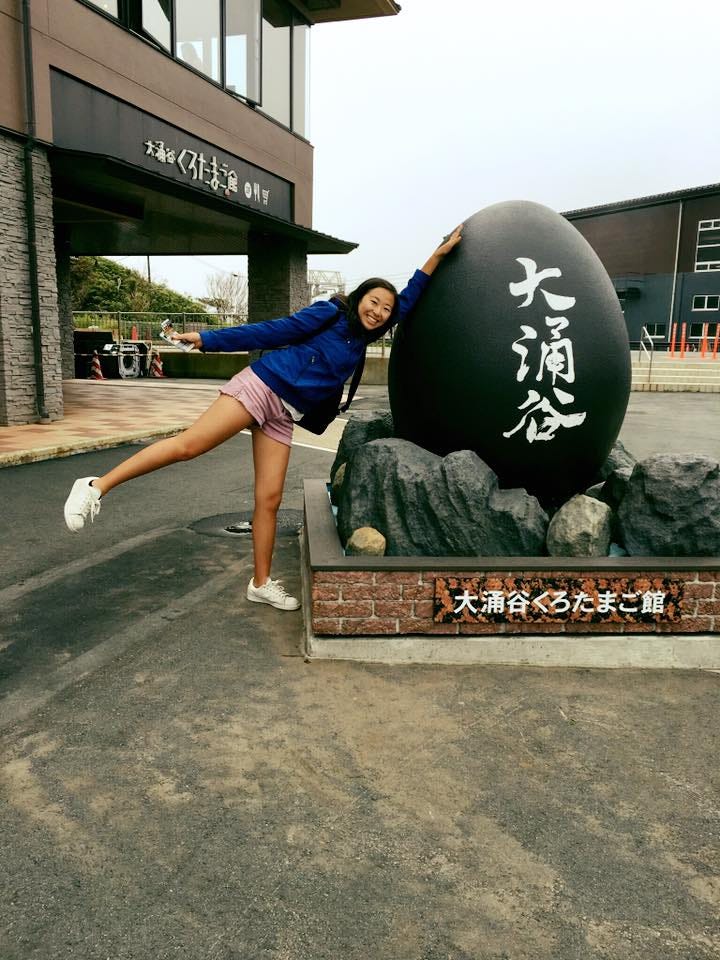
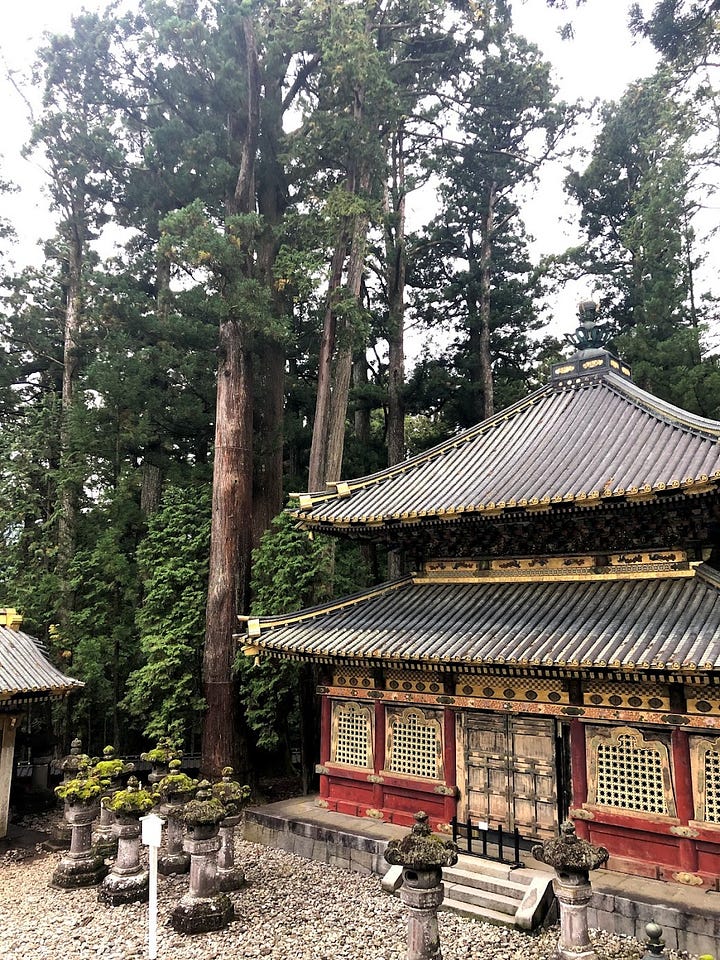
Nikko is a town that serves as the gateway to Nikko National Park, the centre of Shinto and Buddhist mountain worship and home to both Toshogu (Japan’s most lavishly decorated shrine) and the mausoleum of Tokugawa Ieyasu. This place is perfect for those who want a more active day seeing waterfalls, gorges, lakes and of course, stunning temples. For a suggested one day itinerary, see here, and to figure out how to get there from Tokyo, see here.
The Izu Peninsula is a resort area famous for its hot springs, stunning coastlines and early blooming variety of cherry blossom. However, arguably the most well-known attraction that has put this place on the map is the Izu Shaboten Zoo, specifically the capybara onsen that it hosts during the winter season. For my suggested one day itinerary, see my post here [coming soon!]
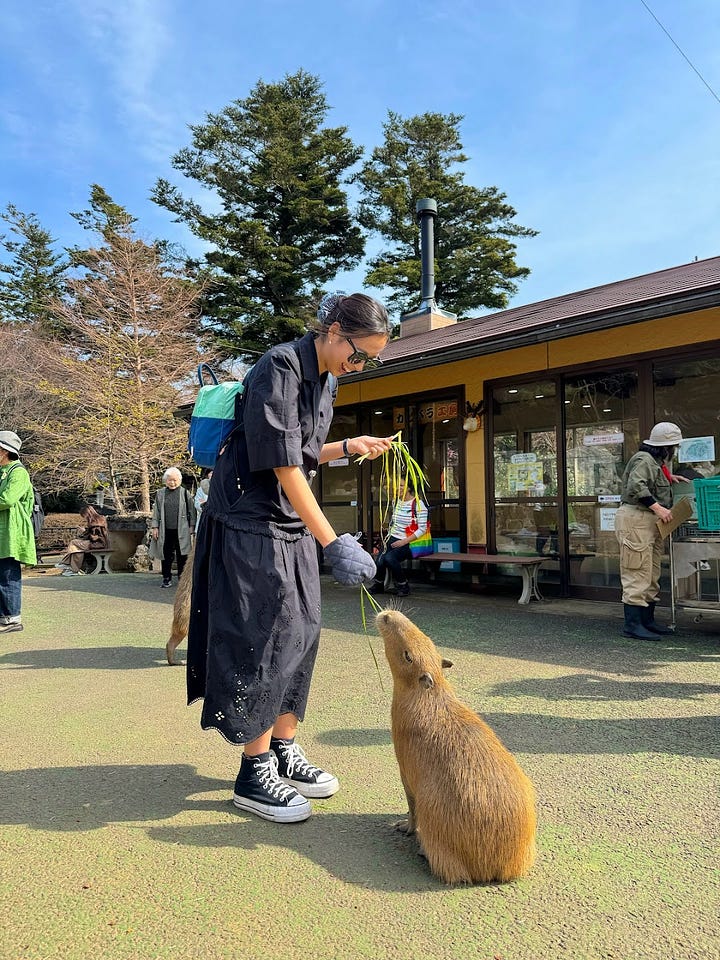

Other places that would make for fantastic day trips include Kawaguchi-ko, a scenic lake which offers an unbeatable view of Mount Fuji on a clear day, and Kamakura, a beautiful coastal town laden with temples and shrines. Whilst I haven’t made it to either yet, I definitely plan to go to both at some point!
Day 6: Kyoto - South
It’s a cliche, but I don’t care - Kyoto is my favourite place in Japan. The city is surprisingly large and spread out, so tackle the city in strategic portions to make the most of your time here.
It takes around 2.5 hours to get to Kyoto from Tokyo via the shinkansen. If you have a decent amount of daylight left upon arrival, catch golden hour at Fushimi-Inari Shrine, home of the Instagram famous vermilion torii gates that wind up the mountain.
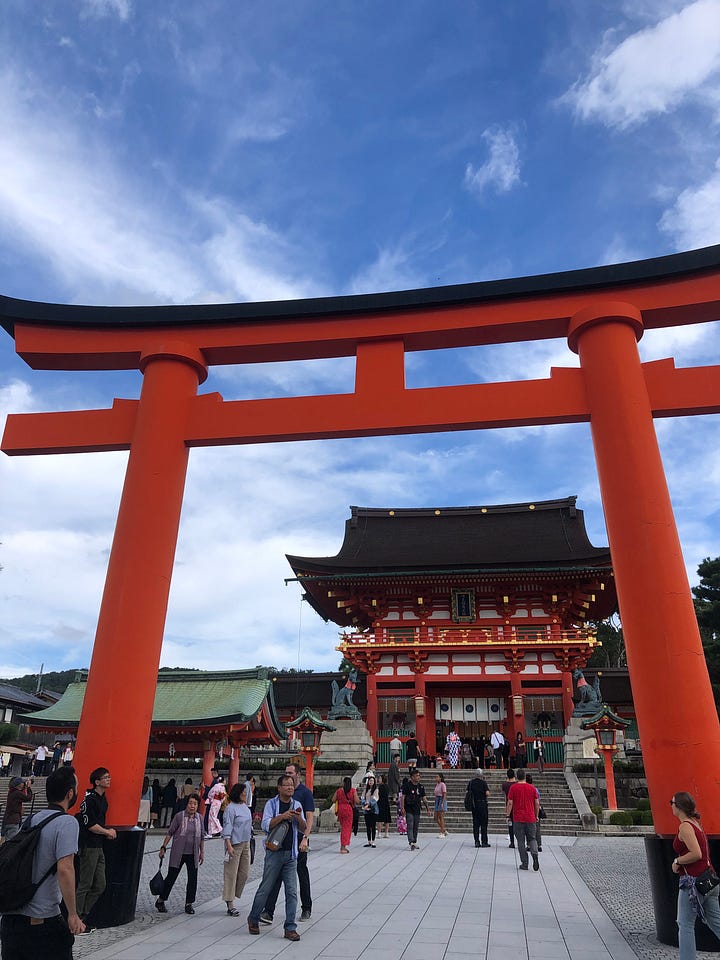
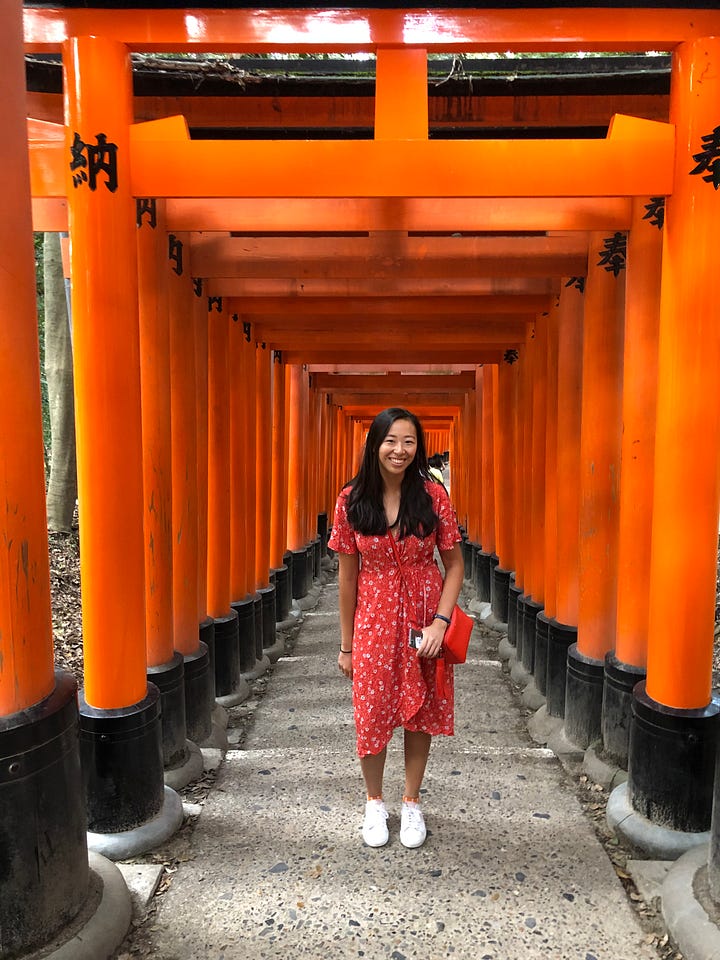
This important shrine is dedicated to the Shinto god of rice, and it is believed that foxes are the god’s messengers - hence why you will spot many statues of foxes and fox motifs dotted throughout the shrine complex.
In the evening, enjoy window shopping whilst walking up the charming street of Kawaramachi-dori on your way to dinner. For dinner, I would highly recommend Chao Chao Gyoza, a small and casual eatery with multi-lingual staff specialising in delicious gyoza dumplings of all types and flavours. Don’t leave without trying their chocolate gyoza with vanilla ice cream, which is absolutely heavenly.
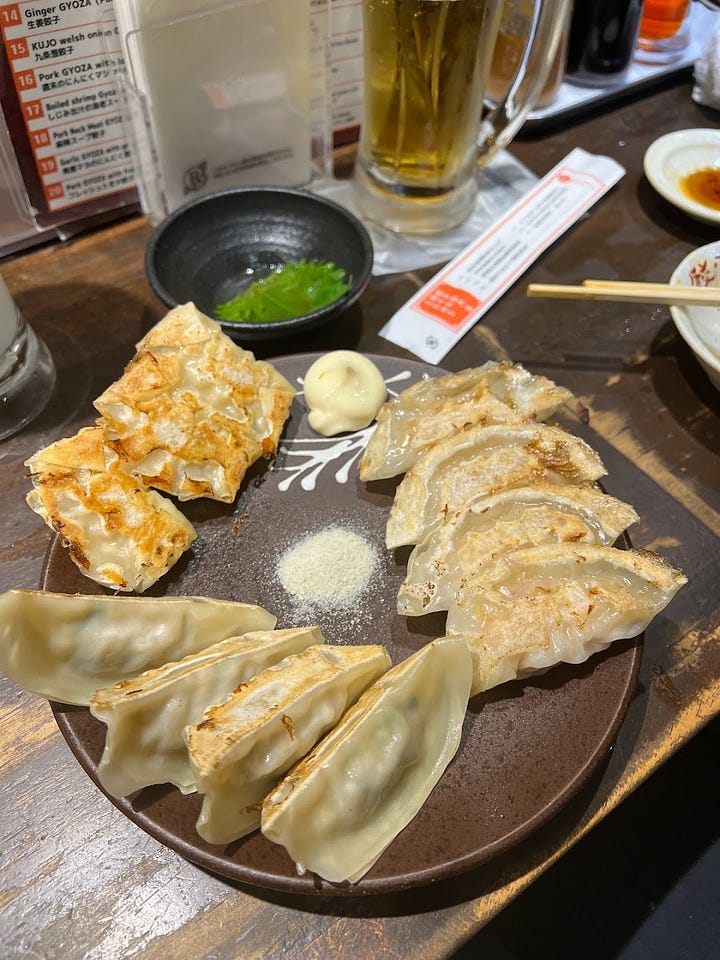
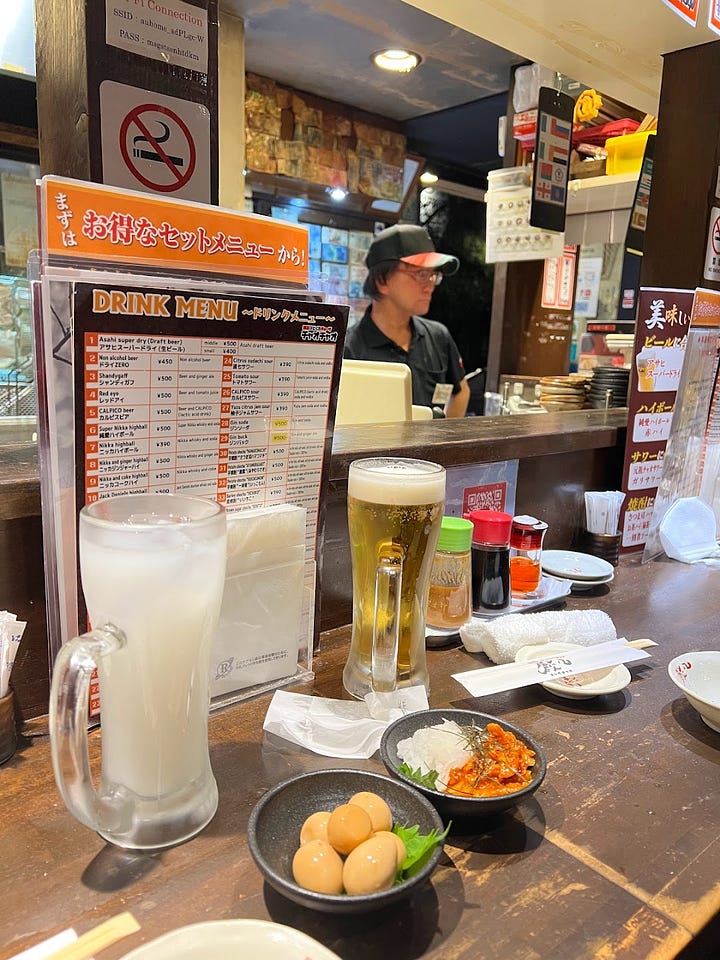
Alternatively, walk a little further to reach Pontocho, which is the atmospheric old-world food district. You can check out Gyukatsu, a popular spot that specialises in beef katsu sets, or if you’re feeling more adventurous, head to Ukiya Soba which serves handmade soba noodles in a uniquely whipped natto and raw egg sauce.
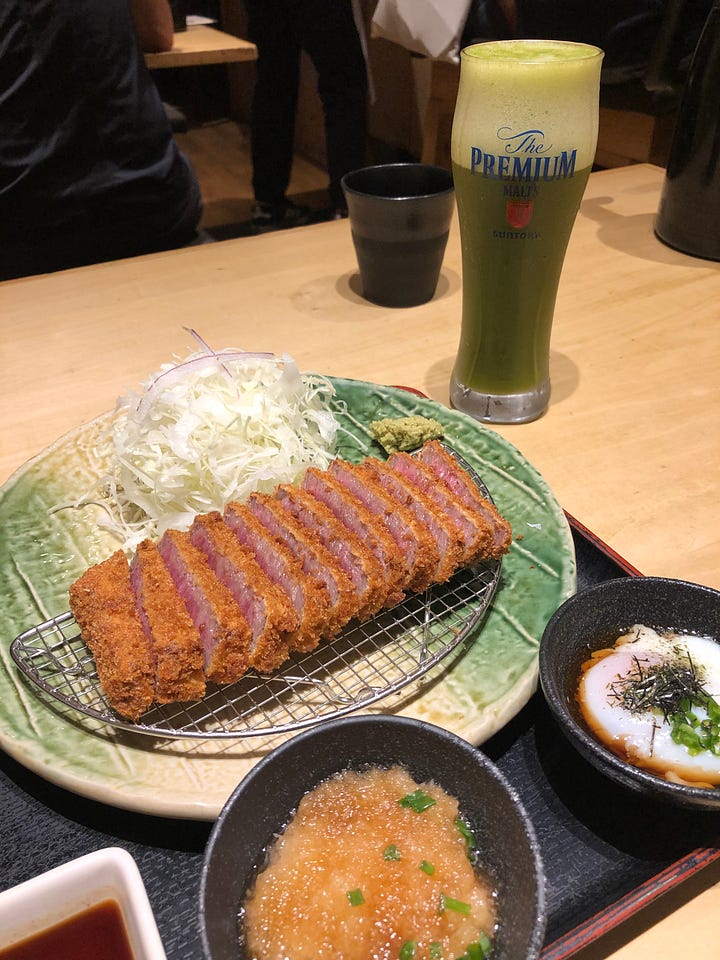
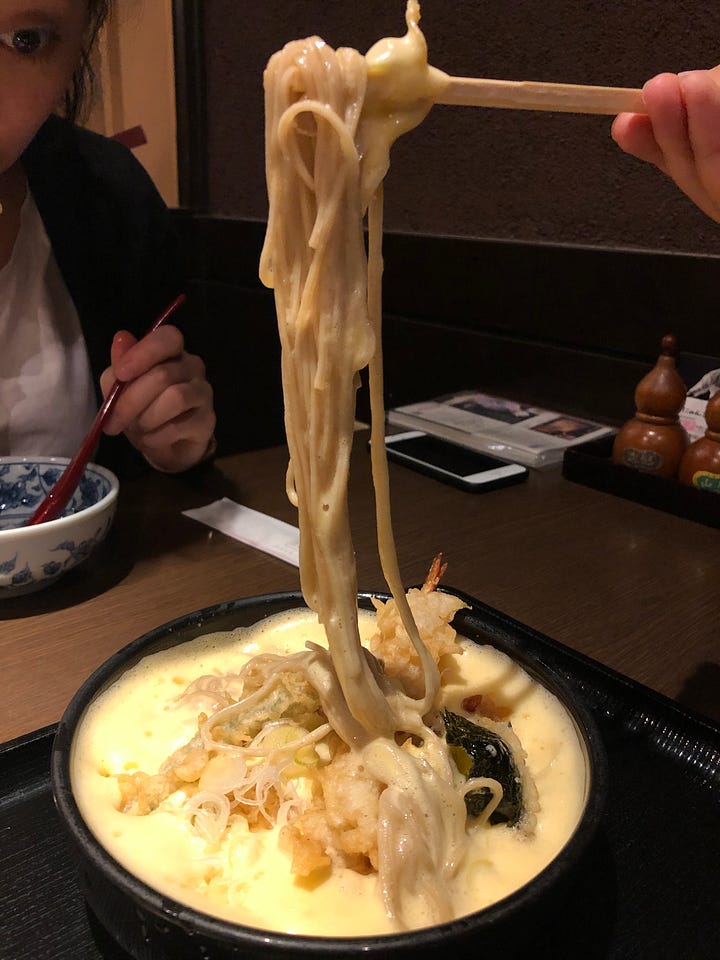
If you have time after dinner, take a stroll through the nearby geisha district of Gion - you may be lucky enough to see a geisha duck in or out from the teahouses in which they entertain their guests.
Where to stay in Kyoto
Mid-range hotels: Miru Hotel Nishiki and Hotel Gracery Kyoto Sanjo are both great options - unbeatable locations and well-appointed rooms. Miru has somewhat more of a boutique feel whereas Hotel Gracery is part of a Japan-wide chain.
Mid-range ryokan: Kyomachiya Ryokan Sakura Urushitei offers a solid ryokan experience on a budget, although rooms are on the smaller side.
Day 7: Kyoto - East
For your first full day in Kyoto, get up as early as you can manage and head for arguably the most famous temple in the city - Kiyomizu-dera, or “Pure Water Temple”. Part of the fun in getting to the temple is walking up the hill through the Higashiyama district, with the narrow streets lined with shops selling snacks and souvenirs. Many of these places offer tasty free samples, so take your time and enjoy soaking it all in.
You will be hard pressed to find someone who will not be impressed upon catching sight of the temple at the top of the hill - Kiyomizu-dera is stunning, breathtaking, majestic… insert other effusive adjective here. However, it’s important to get here early if you want to beat the crowds, which can detract from the beauty and serenity of the place during peak season.
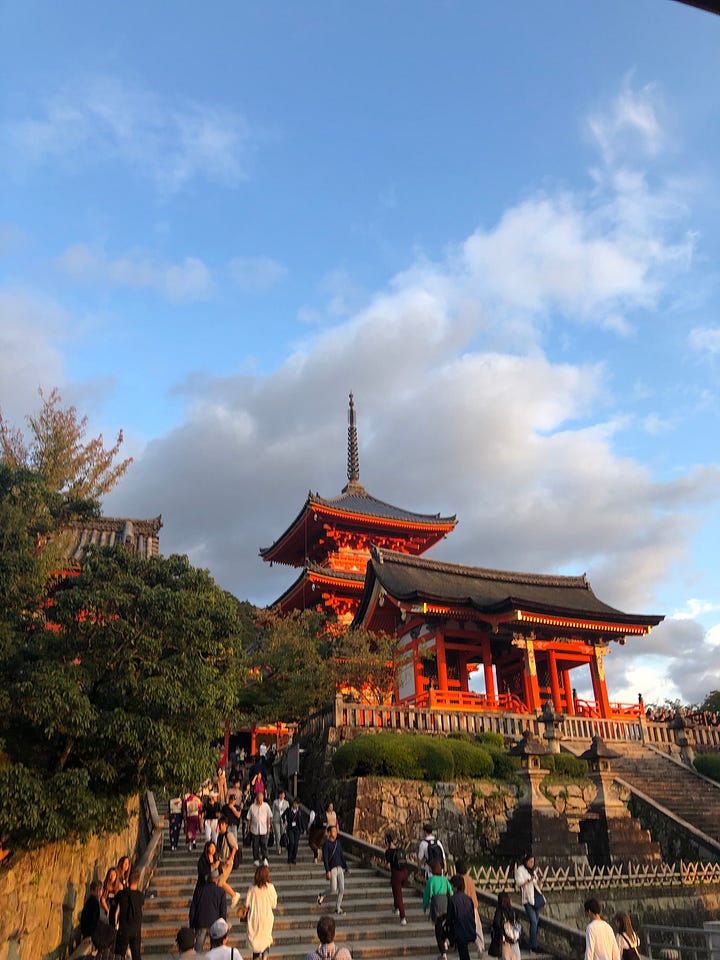
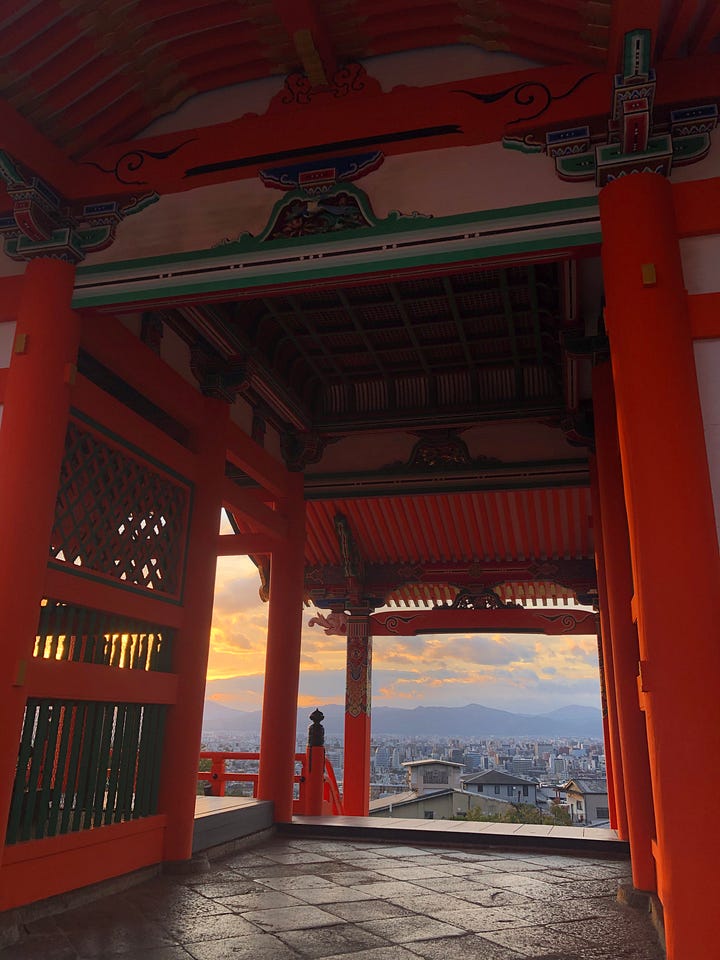
If you are visiting during cherry blossom season (March - April), autumn leaves season (November) or Obon (August), visit Kiyomizu-dera at night instead to catch the spectacular nighttime illuminations! You can check the temple’s website/social media for the illuminations’ specific dates, which vary slightly year by year.

However, if you are visiting outside of the nighttime illumination period, make your way north from Kiyomizu-dera to Higashiyama Jisho-ji, better known as Ginkaku-ji or the “Silver Pavilion”. This nickname is somewhat misleading since no part of the temple is actually covered in silver - rather, it is theorised that the name arose as a way to distinguish it from Kinkaku-ji, or the “Golden Pavilion” (which we’ll be getting onto). This temple is one of my personal favourites, thanks to its meticulously maintained gardens that are truly jaw-droppingly beautiful during autumn.
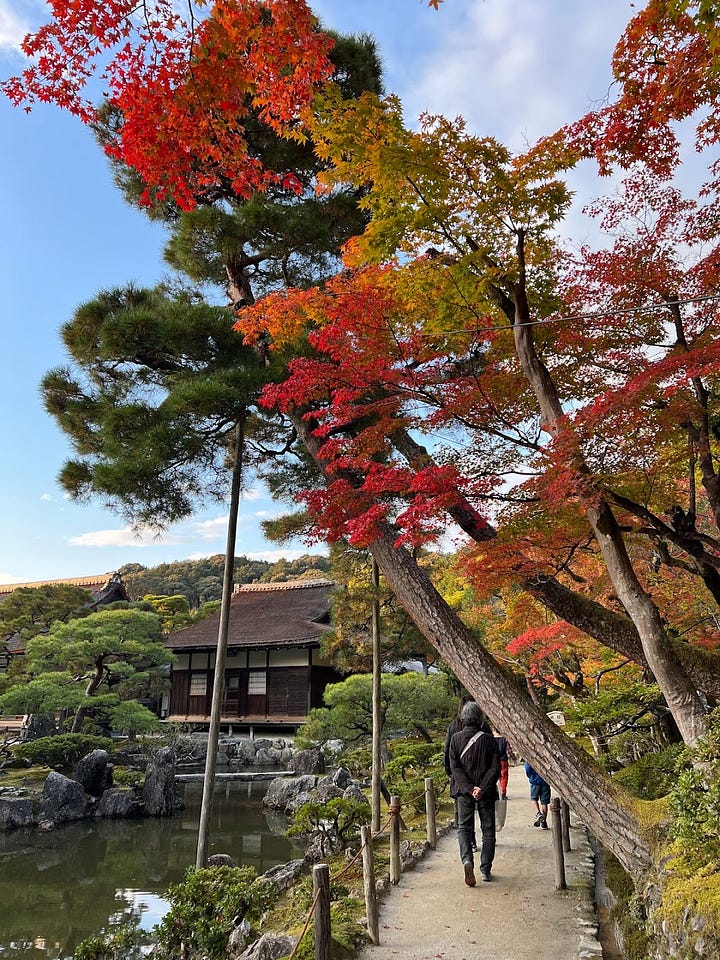
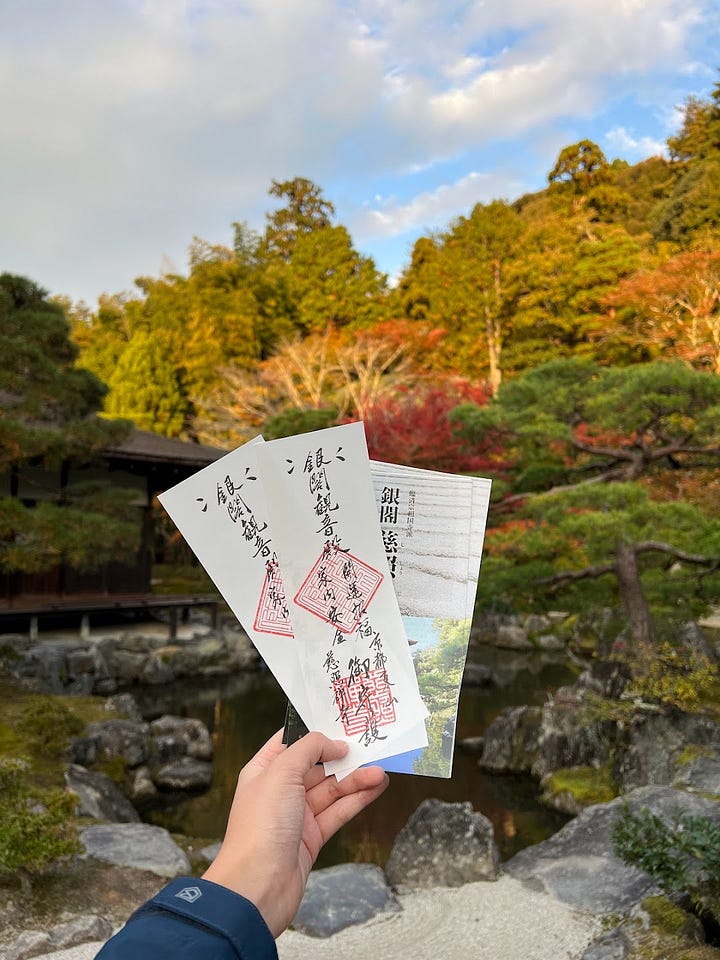
Ginkaku-ji also features an incredible dry sand garden, with the sand painstakingly shaped into a dome-like structure to reference Mount Fuji, and meditative patterns raked into the ground to encourage a feeling of Zen.
After touring Ginkaku-ji, walk back south by following The Philosopher’s Path - this is a peaceful and scenic walk, with restaurants, cafes and shops dotted along it. There are also many small temples and shrines here that you can admire or even poke your head into if you are so inclined.
Day 8: Kyoto - Central + North
Although you may have already come across it by this point, take the chance to properly stroll up and down Nishiki Market, located in the heart of the city. This crowded market is full of stalls selling street food and souvenirs, as well as hole-in-the-wall kaisen-don restaurants. If you get anything here, get the mega oysters from the Daiyasu stall - they are monstrously large, but truly delicious.
Today, you will be heading up north to see the image you’ve seen on all Kyoto postcards - Kinkaku-ji, or the Golden Pavilion, named because it is actually covered in real gold leaf. This is one of those sights that is just as good, if not better than the pictures if you are lucky with the weather and the crowds, so give yourself ample time to make the journey up and explore the temple grounds at leisure.
Whilst you’re up in this part of Kyoto, you can also check out the nearby temple of Ryoan-ji, home to Japan’s most famous Zen rock garden, and/or Daitoku-ji, whose rock gardens are (in my opinion) more impressive.
Once you’re all templed out, head back to the city centre to walk along the covered shopping streets of Teramachi and Shin Kyogoku. Every Japanese town and city has one of these arcades, and Kyoto is no exception, with its interconnected streets full of shops and restaurants that will entertain you during your search for dinner.
Katsukura is a really good tonkatsu (breaded pork cutlet, of katsu curry fame) restaurant with a branch in Teramachi - Wagamama eat your heart out, because this is the real deal.
Alternatively, pick up a Ebi Filet-O-Shrimp burger from the McDonald’s - and before you scoff, Japan’s McDonald’s is a world away from the West’s, and the shrimp burger is an import we desperately need from them (Filet-O-Fish defenders, you will definitely want to try this whilst in Japan).
Day 9: Kyoto - West
Your final full day in Kyoto is going to be a big one as you head towards Arashiyama, a very popular tourist district in the western outskirts of the city which is home to the famous bamboo grove and a monkey park. However, I would personally skip both of these - the real gems of this area are somewhat more hidden.
If you’re willing to do a bit of admin to secure your space ahead of time, I would highly recommend visiting Saiho-ji, more commonly known as Kokedera which translates into “Moss Temple”. If you do bag a spot via the online reservation system, you will first be seated in the temple’s main hall (Japanese-style, on your shins) where you will have the unique opportunity to participate in sutra-copying. This involves tracing out Japanese kanji characters with a brush pen, which isn’t as difficult as it may sound! However, the main attraction of Kokedera is, of course, its stunning garden which is covered in a luxuriant carpet of moss outside of winter, making you realise why this UNESCO World Heritage Site is so careful about moderating the number of visitors.

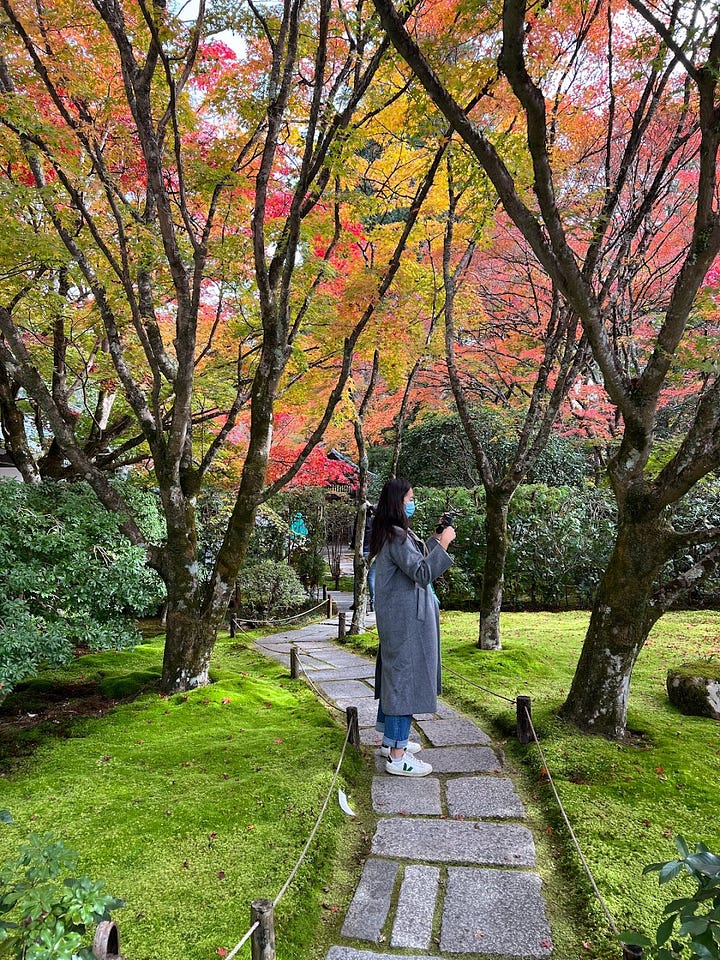
After admiring Kokedera, make your way up to Arashiyama proper and take a stroll along the main shopping street, although be warned that it can get very congested with tourists. If you’ve arrived in time for lunch, Kijurou is a gorgeous restaurant tucked away in a quiet alcove off the busy main street, specialising in wagyu beef sets. You can choose to have the beef served over rice (highly recommended) or have it sukiyaki style, i.e. simmered in a subtly sweet broth. Either way, it’ll be worth the queue to get in.
After lunch, enjoy the scenic walk to get to Okochi Sanso Garden - a beautiful villa with sprawling Japanese gardens that used to be the home of Japanese movie star Denjiro Okochi. A cup of warm matcha and a Japanese sweet are included in the price of admission, so enjoy sipping on this under the beautiful trees in the teahouse area.

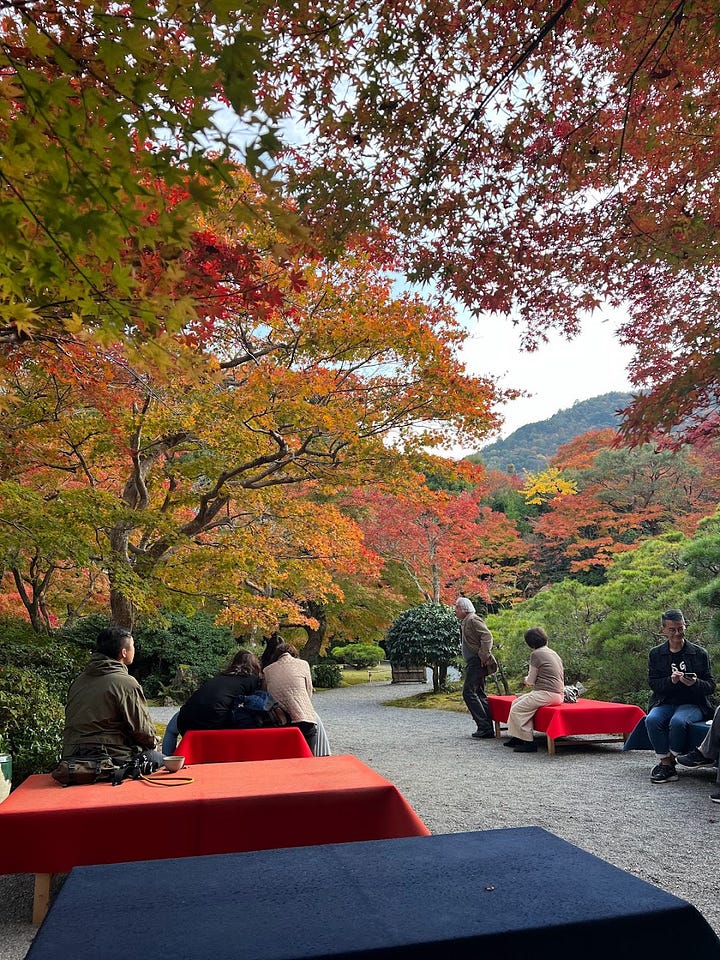
If you didn’t manage to get a slot at Kokedera, or if you just can’t get enough of moss gardens, check out Gio-ji - a very small, off the beaten track temple with an equally gorgeous moss garden that is straight out of a Studio Ghibli film. Whilst it is best enjoyed in summer for the full carpet effect, this serene little temple is truly a magical sight at any time of year and is one of Kyoto’s best kept secrets.
However, if you’re here to tick off the big names, Tenryu-ji is a logical last stop for your day in Arashiyama as the most famous temple in the area. Tenryu-ji’s expansive and stunning landscape gardens are the brainchild of Muso Soseki, who was also the mastermind behind Kokedera’s garden. Tenryu-ji also has its own restaurant which serves exquisite vegetarian temple food - make sure to book ahead if you’re keen to try this!
There are always more sights to see in Kyoto - but for now, it’s time to go back into the city…
Day 10: Osaka - North
Osaka is best thought of as Tokyo’s younger, much smaller cousin - laidback, casual and cheeky. Osakans pride themselves on their reverence for food, summed up by their expression kuidaore, which literally means to eat yourself into bankruptcy. You can see why I am so fond of this city.

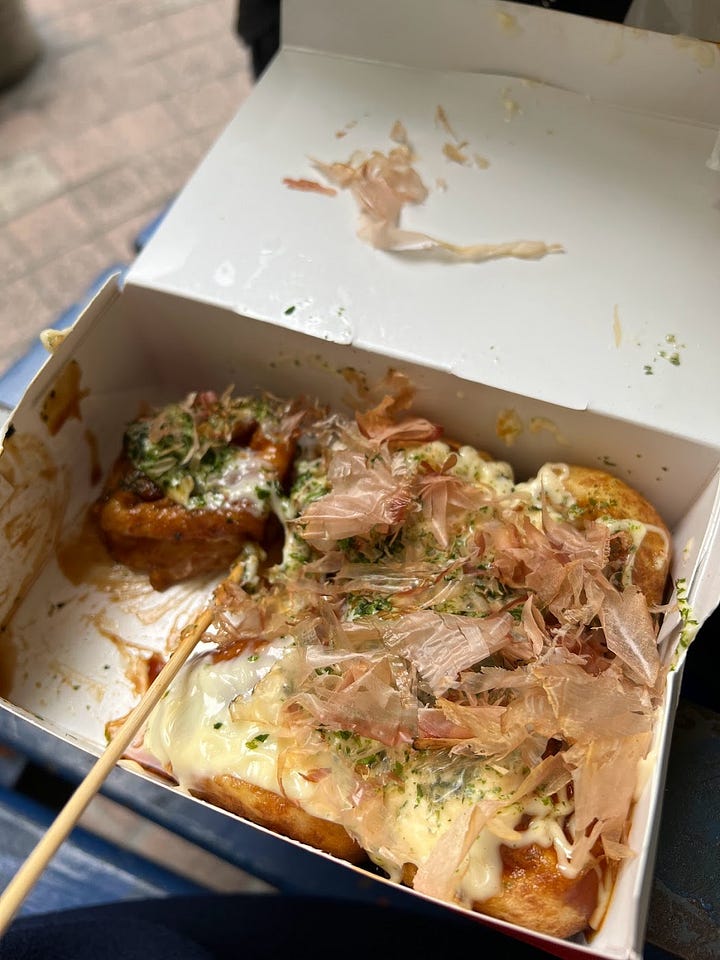
Helpfully, Osaka is only about 30 minutes away by train from Kyoto, making it a convenient destination for you to shift gears and move away from sleepy and serene Kyoto. If you don’t have time for both, I would definitely prioritise Kyoto - but Osaka is worth at least a day trip if you can squeeze it in.
Where to stay in Osaka
Blowout: The Ritz-Carlton, Osaka. A short walk away from Umeda Station and… it’s the Ritz.
Mid-range: Hotel Cordia Osaka Hommachi. Great location right in the centre of the city, good facilities and clean rooms (although again, like a lot of places in Japan, their rooms are on the smaller side).
Start in Umeda, which is the northern hub of Osaka. Umeda is, in a word, overwhelming - it is where the major train station is located, and in Japan you’ll quickly learn that major train station = activity, and in a big way. Umeda Station in particular is connected to an innumerable number of shopping malls, and its basement comprises a vast sprawling network of underground shops and restaurants - like a city underneath a city. It’s very easy to get lost in this labyrinth, so I would suggest singling out and tackling a mall by itself if you want to get stuck into shopping.
Given the array of restaurants here, you could (like anywhere else in Japan) pick anywhere and have an amazing meal, but I would strongly recommend Hakodate Gourmet-kaitenzushi located in the Grand Front Osaka shopping centre. Kaiten-zushi means conveyer belt sushi, but not like any conveyer belt sushi you might have had before - this particular chain restaurant ships in its seafood from Hokkaido, and you can definitely taste the difference.
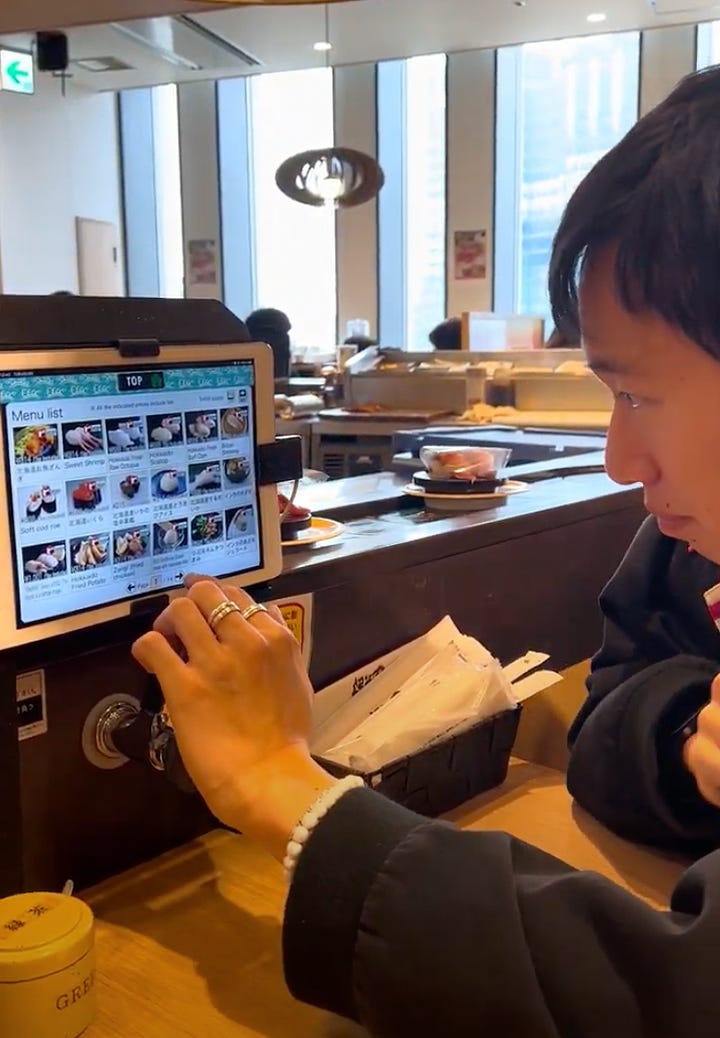

Alternatively, you can (and must at some point) try one of Osaka’s most famous street foods - okonomiyaki, which are customisable savoury pancakes made with noodles, cabbage and batter. My favourite spot for this is at Okonomiyaki Kiji, a Michelin Bib Gourmand grubby restaurant that is hidden away in a nondescript shopping arcade modelled after the old streets of Japan.
In the afternoon, head on over to Osaka Castle, one of the most iconic sights of the city. Like many Japanese castles, Osaka Castle is a reconstruction of the original, and you can learn about its interesting history from the museum inside, although I wouldn’t say this is essential to do. What I would wholeheartedly recommend is exploring the surrounding park and grounds, which are not only beautiful but also give a taste of what local life is actually like here, with lots of Osakans coming here to enjoy the scenery.
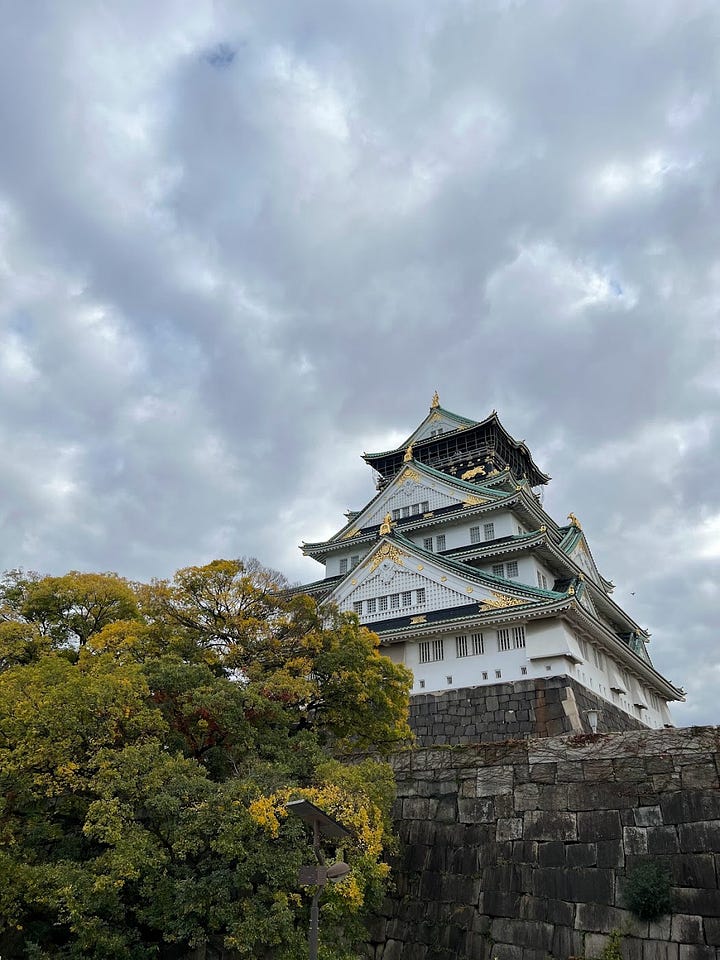
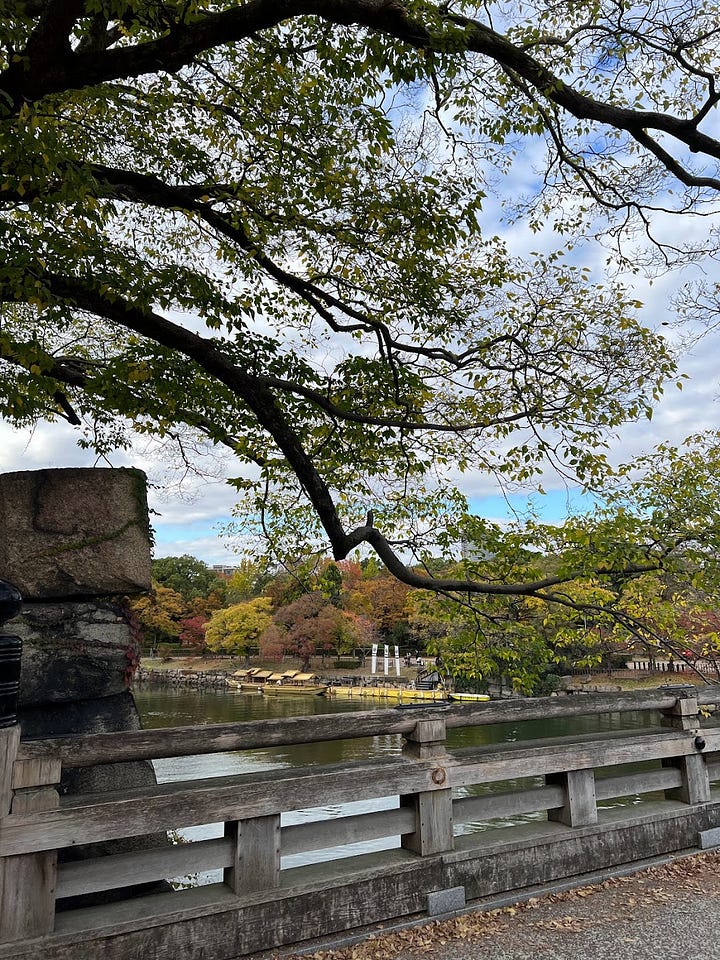
After the castle, take a stroll through the shopping street of Tenjinbashi-suji, which claims to be the longest of its kind in Japan. When compared to the dizzyingly bright and loud Shinsaibashi-suji in the south (which we’ll get onto), Tenjinbashi-suji has a bit more of a quiet, old-school vibe which is a welcome change of pace. Part of its charm is its maze of quaint side streets and alleys that are full of hole-in-the-wall eateries, including Okonomiyaki Chigusa, a very unassuming and local okonomiyaki joint where the pancakes are cooked in front of you.
Day 11: Osaka - Universal Studios Japan
It doesn’t matter how old you are - Universal Studios Japan is guaranteed to be a fantastic day out.
This mother of theme parks consists of multiple themed worlds, including Harry Potter (complete with a replica Hogsmeade and Hogwarts), Minions (our visit here actually inspired us to both go home and watch Despicable Me for the first time), Hollywood, and of course, Super Nintendo World, the first of its kind in the world.
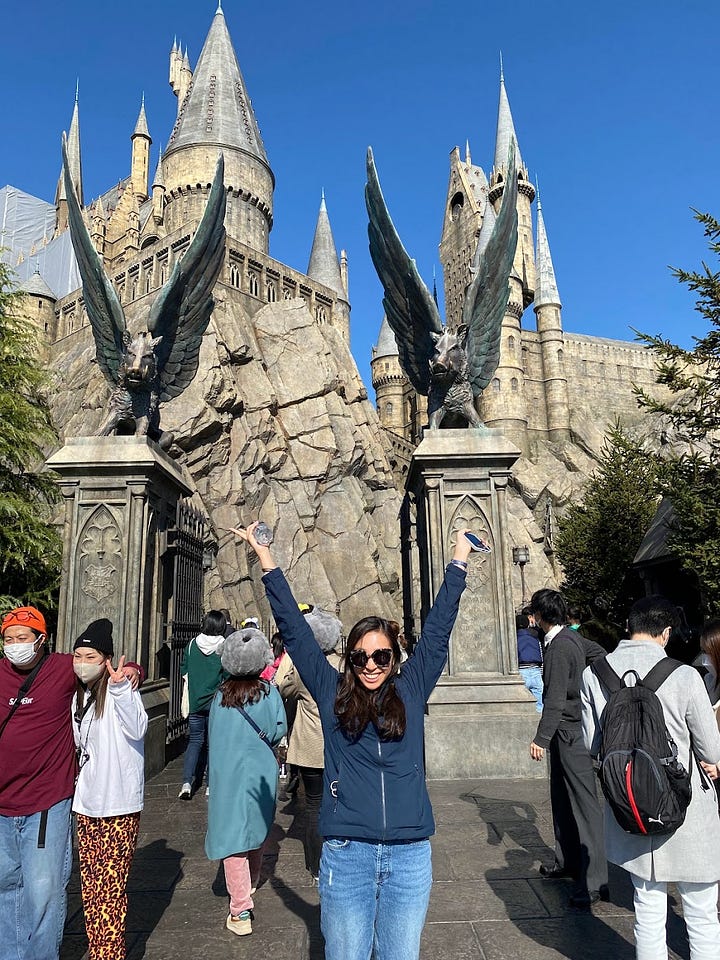
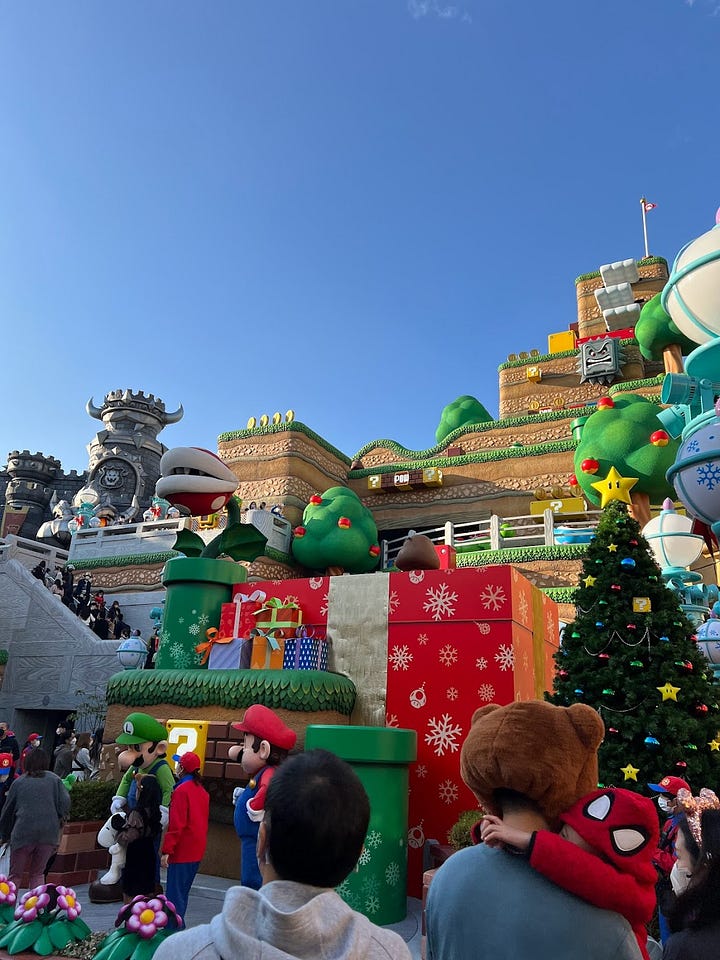
To ensure you have the best experience possible, it is essential that you pre-book your general admission tickets / Studio Pass and an Express Pass (you can purchase both via the official USJ website or Klook). An Express Pass is basically a queue jump pass for up to 7 rides, and I would highly recommend it for popular rides such as the Mario Kart ride and the Hogwarts Forbidden Journey, both of which ended up being our favourites.
Getting an Express Pass for Super Nintendo World/Harry Potter rides also ensures you actually get to visit these sections of the park, since on certain days these areas only allow people with reserved time slots to enter. You can also put your name down for a time slot to these areas on the day at the kiosks inside or via the USJ app, but to avoid disappointment, getting the Express Pass with guaranteed designated time slots for these rides is a must.


In my opinion, the Express Pass is very much worth the extra money - if you skimp on this, chances are you will spend the entire day queuing in the lines that can easily be hours long! Whilst you can theoretically buy Express Passes on the day, they often sell out well in advance, so make sure you buy these at least a fortnight before going to be on the safe side.
Generally, you should also aim to arrive at USJ early - going on a weekday may help ensure less crowds, but expect the place to be busy regardless.
Day 12: Osaka - South
Today is the day to see Osaka in all of its lit-up, consumerist glory. Take the subway to Shinsaibashi and spend the morning strolling along the famous covered street of Shinsaibashi-suji, which offers an overwhelming yet fantastically fun array of shops from high-end department stores to kooky independent boutiques.
Next to Shinsaibashi-suji is Amerika-mura - a homage to Western youth culture with its American vintage clothing shops and restaurants. This is a particularly lively place to visit on the weekends when there are pop-up flea markets and street performers.

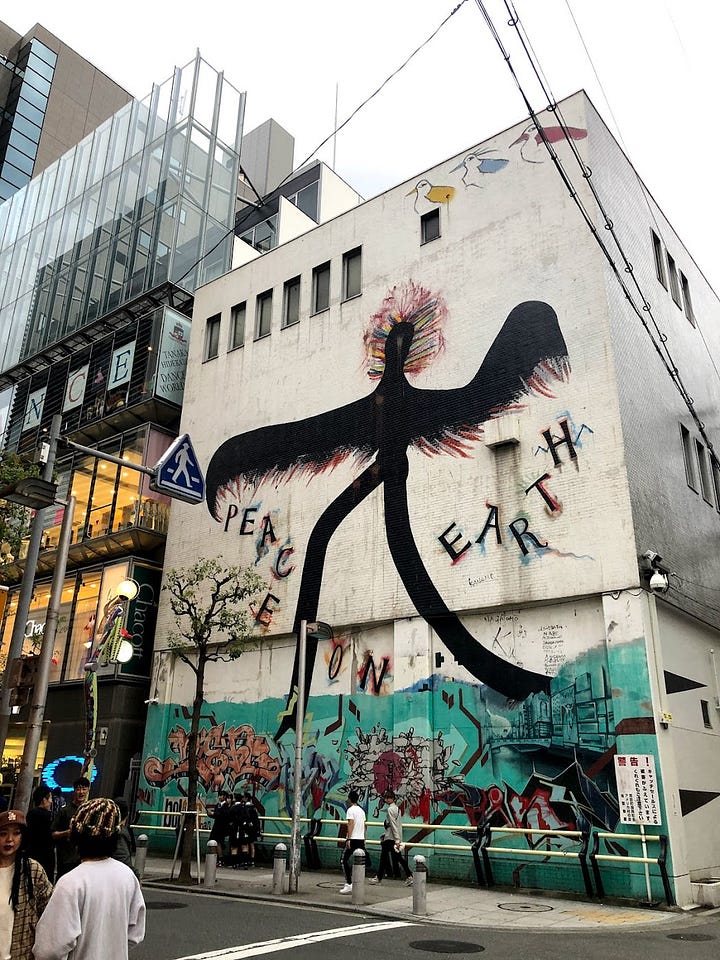
Kuromon Market is worth a stroll through if you’re feeling peckish and in need of sustenance. If you still haven’t managed to try Osaka’s other iconic street food item, takoyaki (savoury balls made with octopus and batter), take the opportunity to try them now at Takoyaki Wanaka, which has branches all around the area.
Sunset will be your cue to head for Namba, an area that really comes alive at night. Dotonbori is the famous eating street that will be the centre of activity, so head over here to catch a glimpse of the iconic Glico man billboard.

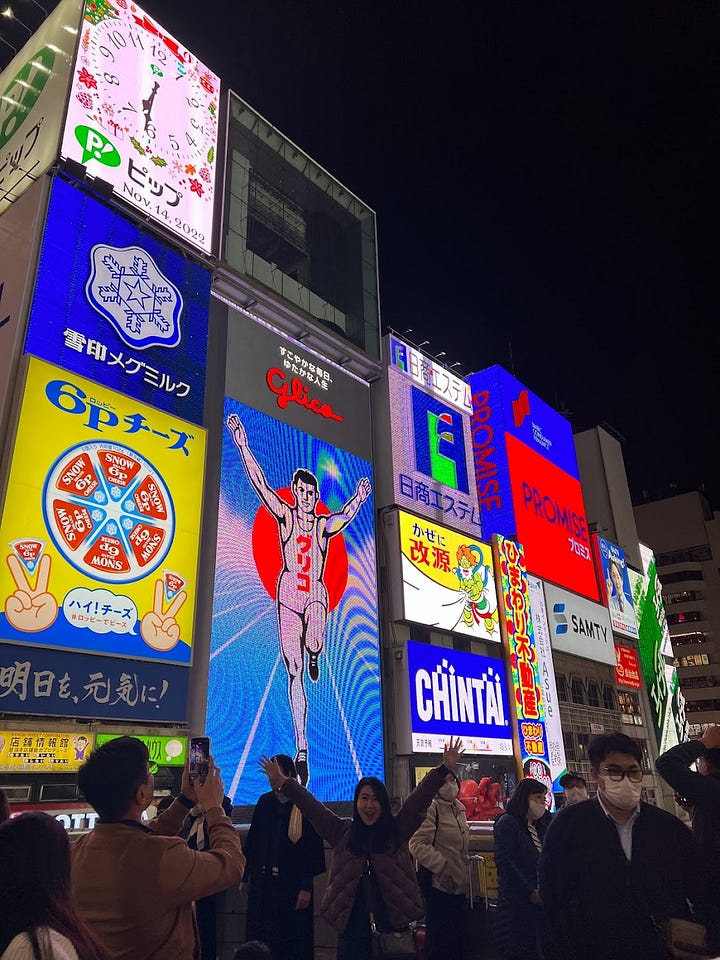
If you want to enjoy okonomiyaki one more time before leaving Osaka, Houzenji Sampei is a great, no-frills joint tucked away in a side alley. Alternatively, if you head a bit further south, Oretachino-curry Ramen Koji Labo is another low-key spot where the friendly owner-chef serves up hearty portions of warming curry rice and ramen at counter-only seats.
To round off your day, you can either check out Taito Station Namba to get your Japanese game arcade fix at the crane machines / purikura (sticker photo booth) machines, or press onto Shinsekai, a nostalgic neighbourhood with the iconic Tsukentaku Tower at its core. I would recommend coming here at night when the tower and the surrounding area is lit up and people are scoffing away at kushikatsu (deep-fried assorted meat and vegetable skewers) at the late night bars in the area.

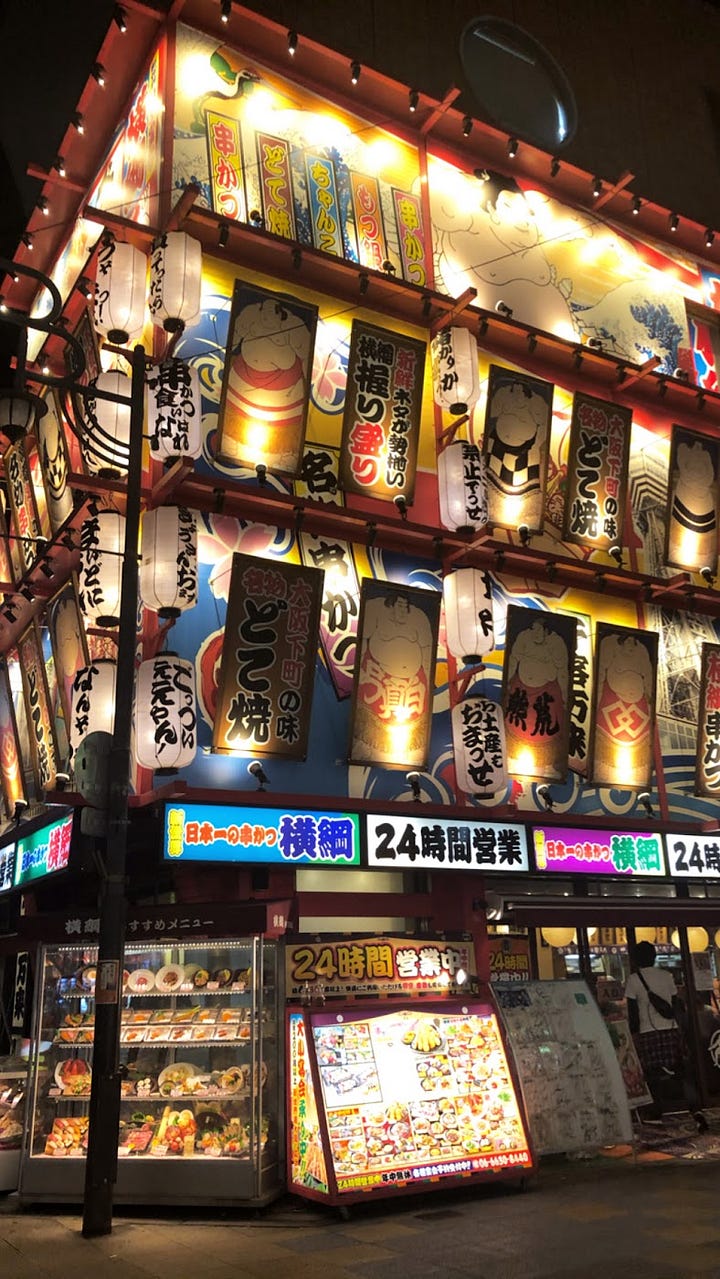
Day 13: Nara
Feel free to skip this if you wish, but if you need a change of pace from city life again, Nara makes for a lovely day trip from Osaka, being only about 30 minutes away by train. Nara was the first permanent capital of Japan, and so has a very old-world atmosphere with its cute little streets full of artisan shops and its beautiful temples, the biggest and most famous of which is Todai-ji.
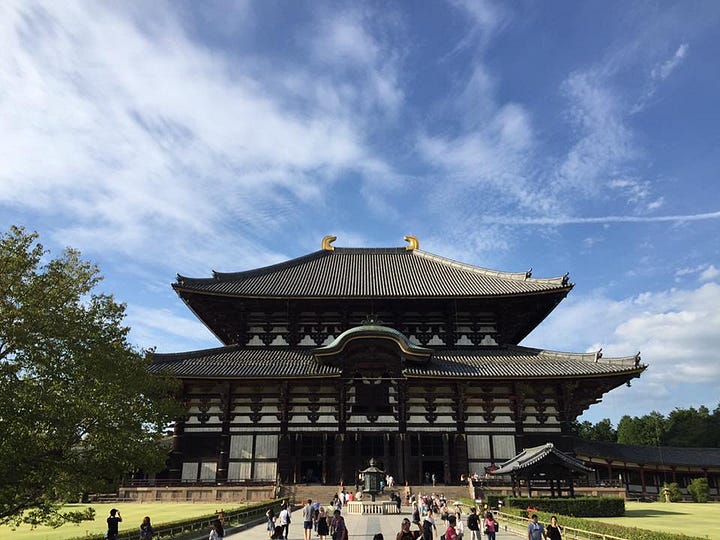
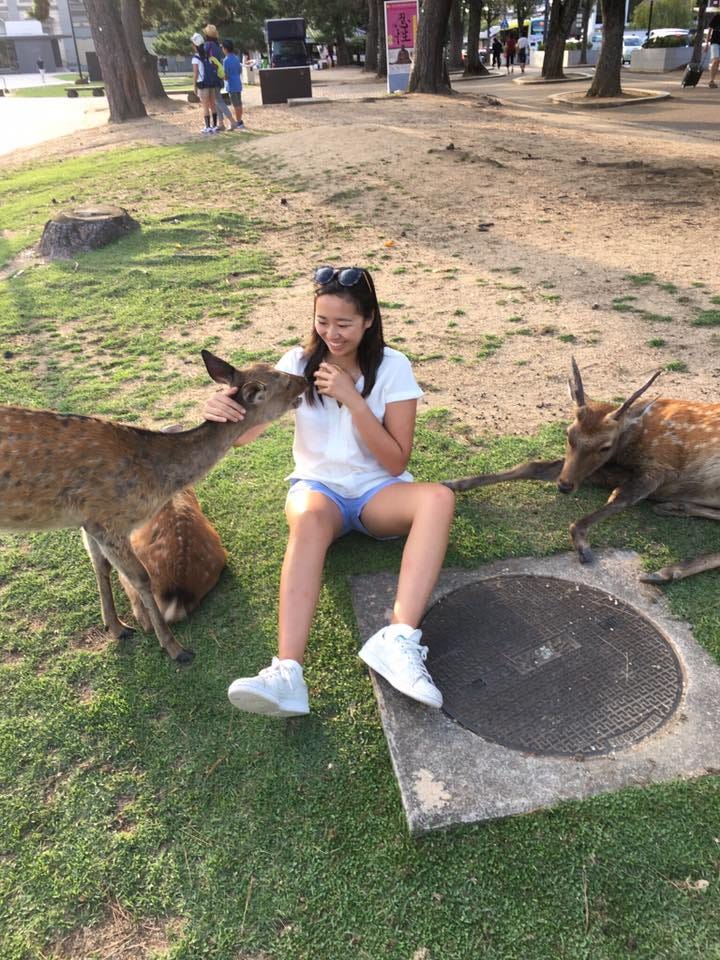
However, Nara’s main attraction is, of course, the famous herds of wild yet friendly deer that roam freely all over the city. If you're jittery around large animals then maybe it’s best to avoid them, but be assured that the deer here are (mostly) gentle and you can buy deer crackers from one of the many stalls dotted around to hand feed them. The deer have even learned to bow before taking the food!
Day 14: Tokyo
Time to zip back to Tokyo on the shinkansen to catch your flight home. Don’t forget to pick up an eki-ben (train lunchbox) at the station for the journey!
Now that you’ve completed Japan for beginners - stay tuned for the next level…

